Merry Pranksters
description: group formed around American author Ken Kesey
81 results

The Electric Kool-Aid Acid Test
by
Tom Wolfe
Published 1 Jan 1968
"The Intrepid Traveler—" "—a beam of light!" "The Intrepid Traveler—" "—a lightning beam ! " "The Intrepid Traveler—" "—shortens the circuit!" "The Intrepid Traveler—" "—short-waves the band!" "The Intrepid Traveler—" "—and his band of Merry Pranksters!" "The Intrepid Traveler!—" —and his band of Merry Pranksters take a journey to the East. chapter VI The Bus I COULDN'T TELL YOU FOR SURE WHICH OF THE MERRY Pranksters got the idea for the bus, but it had the Babbs touch. It was a superprank, in any case. The original fantasy, here in the spring of 1964, had been that Kesey and four or five others would get a station wagon and drive to New York for the New York World's Fair.
…
Control Tower to Orbiter One CONTROL chapter XV Cloud A HULKING GREAT SIGN ON THE GATE OUT FRONT THE MERRY PRANKSTERS WELCOME THE BEATLES The Beatles were going to be at the Cow Palace outside of San Francisco on the evening of September 2. The papers, the radio, the TV could talk of nothing else. Kesey's idea, the current fantasy, is that after the show the Beatles will come to La Honda for a good freaking rout with the Merry Pranksters. Now as to how this is to all come about... But one has to admit the sign creates an effect. THE MERRY PRANKSTERS WELCOME THE BEATLES Out on Route 84, Mom&Dad&Buddy&Sis in their Ocelot Rabies 400 hardtop sedans, they slow down and stop and stare.
…
THE MERRY PRANKSTERS WELCOME THE BEATLES Out on Route 84, Mom&Dad&Buddy&Sis in their Ocelot Rabies 400 hardtop sedans, they slow down and stop and stare. The last sign, the one reading THE MERRY PRANKSTERS WELCOME THE HELL'S ANGELS, for that one they mainly just slowed down. After all, it didn't say when. It might be 30 seconds from now—hundreds of the beasts, coming 'round the mountain in a shower of spirochetes and crab lice, spitting out bone marrow from the last cannibal rape job up the road. Well, it worked with the Hell's Angels. They put up the sign THE MERRY PRANKSTERS WELCOME THE HELL'S ANGELS, and sure enough the Angels came, these unbelievable bogeymen for the middle class, in the flesh, and they became part of the Prankster movie, in the rich ripe cheesy Angel flesh.
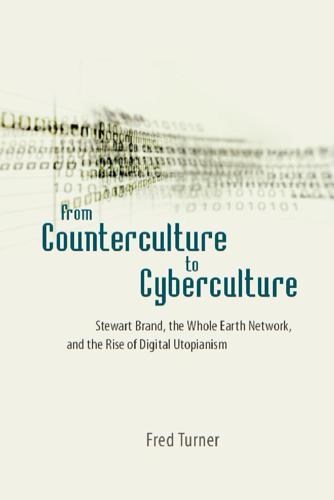
From Counterculture to Cyberculture: Stewart Brand, the Whole Earth Network, and the Rise of Digital Utopianism
by
Fred Turner
Published 31 Aug 2006
The user-friendly, time-sharing vision of Xerox PARC and the politically empowering, information-community vision of Resource One were two sides of the same coin, Brand implied. Both groups, he suggested, were high-tech versions of the Merry Pranksters, and the computer itself was a new LSD. Drawing on the rhetorical tactics of cybernetics, Brand offered up Xerox PARC, Resource One, and the Merry Pranksters as prototypical elites for the techno-social future. He allowed each to claim some of [ 118 ] Chapter 4 the cultural legitimacy of the others: in his feature, Resource One appeared to be not a fringe group of ex-hippies but a central player in a new computer movement.
…
In The Electric Kool-Aid Acid Test, Tom Wolfe took readers inside the garage where the Merry Pranksters painted their psychedelic bus. Quittner here took readers inside San Francisco’s Bistro Rôti—“a cozily upscale place overlooking the bay . . . woodburning stove . . . valet parking . . . white Jaguar in front . . .”—for the EFF’s quarterly board meeting. Diners included Bill Joy, founder of Sun Microsystems; David Liddle, head of Interval Research Corporation; Wired’s own Jane Metcalfe; and a handful of other Silicon Valley luminaries alongside the current board members. Like the Merry Pranksters in Wolfe’s account, this new elite inspired a hush in onlookers: “Waiters and waitresses quietly remove the uneaten shrimp and satay and whisper to each diner: Chicken, steak or fish?
…
McLuhan’s dual emphases also allowed young people to imagine the local communities they built around these media not simply as communities built around consumption of industrial products, but as model communities for a new society. In McLuhan’s writing, and in the artistic practice of groups like USCO and, later, the psychedelic practices of groups like San Francisco’s Merry Pranksters, technologies produced by mass, S t e w a r t B ran d M e e t s t h e C y b e r n e t i c C o u n t e r c u l t u r e [ 55 ] industrial society offered the keys to transforming and thus to saving the adult world. No one promoted this doctrine more fervently than the technocratic polymath Buckminster Fuller.

Whole Earth: The Many Lives of Stewart Brand
by
John Markoff
Published 22 Mar 2022
Earlier, he played an instrumental role in the emergence of the 1960s American counterculture, which exploded upon the American scene in many ways and still resonates in the political and cultural battles taking place today. He was in the thick of the events that led to the modern environmental movement during the 1970s. At various times he has dabbled in journalism, photography, activism, multimedia, social media, and business consulting. He has also been a provocateur. A member of Ken Kesey’s band of Merry Pranksters, he helped light the spark that led to the Summer of Love and the San Francisco music scene. Among the first to catch wind of the significance of cyberspace and personal computing, in the 1980s he helped create an early online virtual community. Although he was largely an observer of the technical community that created Silicon Valley, his various ideas and crusades around the Whole Earth Catalog, which he created in the fall of 1968, foreshadow and resonate with the techno-utopian culture that the Valley spawned.
…
Decades before Silicon Valley would blossom and transform Portola Valley into a woodsy and elegant retreat for technologists and venture capitalists, it was a rustic community in the hills west of Stanford that had a distinct bohemian tinge. Ladera was located on Alpine Road, just a short drive from Perry Lane—described by writer Ed McClanahan as “the lunatic fringe on Stanford’s stiff upper lip”[1]—where Ken Kesey and the Merry Pranksters first took root in the early sixties, and around the corner from where the Grateful Dead took up residence in an old mansion in the midsixties. Prepped by Mike, the Raymonds met Brand the morning after he arrived at Stanford and promptly drove him to Brooks Brothers in San Francisco to buy clothes for his new college career.
…
Dorothy Ostwind, a Stanford graduate student, was hanging out with Kesey and several of his friends one afternoon when a red VW camper drove across the bridge leading to the property. She watched a tall, thin blond man get out of the bus, struck immediately with how serious he seemed, that he was clearly on a mission. The next thing she noticed was that his van was full of books—in fact, it was like some kind of 1960s bookmobile. Kesey’s band of Merry Pranksters, which would later be immortalized in Tom Wolfe’s The Electric Kool-Aid Acid Test, was just starting to form. An eclectic mix of outsiders, poets, journalists, and camp followers would come out to see Kesey in the redwoods to hang out, get stoned, and play. In Ostwind’s eyes Brand was different.
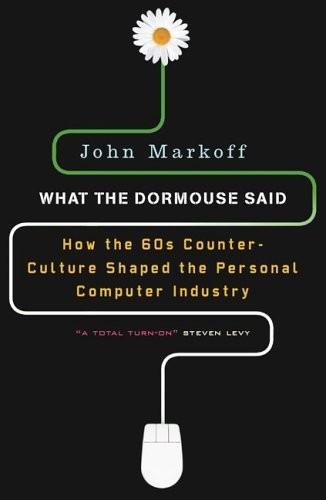
What the Dormouse Said: How the Sixties Counterculture Shaped the Personal Computer Industry
by
John Markoff
Published 1 Jan 2005
That visit had come shortly after his LSD experience at the International Foundation for Advanced Study in 1962, and as a result of his time spent on the reservation Brand had developed a deep interest in Native American cultures. Starting in 1964, he had begun performing his own multimedia presentation called “America Needs Indians.” Brand was also close to Ken Kesey and the Merry Pranksters, and in 1966 he had helped organize the last of the Acid Tests, which served to launch the Grateful Dead. On the Friday evening of that weekend, Brand’s Native American multimedia production had opened the Trips Festival. Combining his Midwestern roots with a Merry Prankster sense of cosmic adventure, Brand would create in 1968 an irresistible format in the first Whole Earth Catalog. A compendium of stuff patterned after the Sears and L.
…
Originally a pizza-parlor folk-rock band known as the Warlocks, during the mid-sixties the Dead literally became the house band for the Midpeninsula, their concerts offering a ready-made identity for members of all of the area’s unruly threads of political and cultural unrest. The group had emerged directly from a set of wrenching, mind-expanding LSD parties orchestrated by Ken Kesey and his Merry Pranksters called Acid Tests, which would transform the culture of the Midpeninsula and ultimately the rest of the country. Now, more than three decades later, the sixties are at best a hazy apparition. The joke, of course, is that if you can remember the sixties, you weren’t really there. Today, it’s easy to laugh at the long hair, headbands, VW buses, and love beads that were trademarks of the counterculture.
…
The British rock group was in the midst of a triumphant American concert tour and was about to play before thousands of screaming teenagers in San Francisco. The possibility that the Fab Four might make an unlikely detour to this out-of-the-way community created a brief local sensation in the Bay Area. But it turned out to be just a stunt pulled by Ken Kesey’s Merry Pranksters, one perfectly suited to the times, which were rapidly beginning to tumble out of control. Driving down La Honda Road on the way to the coast, at milepost 13.57, just a mile and half from the summit, a visitor would pass a once-nondescript cottage that had been painted with striking psychedelic swirls.
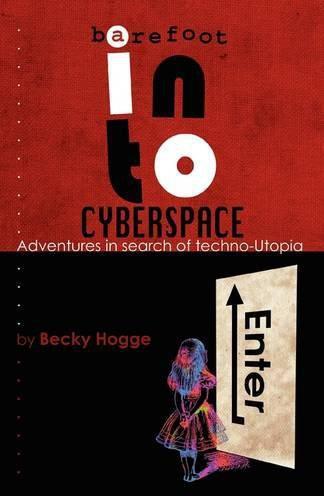
Barefoot Into Cyberspace: Adventures in Search of Techno-Utopia
by
Becky Hogge
,
Damien Morris
and
Christopher Scally
Published 26 Jul 2011
In so being, they bequeathed my generation – or at least the folk who know enough to make it to the Chaos Congress each year – the tools and the vision we would one day employ in an attempt to reboot that culture, to turn consumers back into participants. When I was 19, Ken Kesey came to my home town, Brighton, along with a reproduction of Furthur, the psychedelic school bus he and the Merry Pranksters first drove around the US in the late sixties on one long trip funded by the proceeds of selling Kesey’s film rights for One Flew Over the Cuckoo’s Nest. It was that journey that Tom Wolfe immortalised in The Electric Kool-Aid Acid Test. Thirty years later in 1999, some of the original Merry Pranksters came with him to the Peace Statue on Brighton Beach – the electrical whizz kid Babbs, Mountain Girl – but Brand, the man sitting in front of me now, who travelled in Kesey’s inner circle in the sixties, was not among them.
…
But his eyes are bright, and his old world courtesy combines well with his check shirt, leather waistcoat and slacks. I’m feeling very comfortable sitting across from him on a cosy sofa, as a particularly violent bout of January weather rages in the city outside. Brand is a 1960s original. When Tom Wolfe first came across him as one of Ken Kesey’s Merry Pranksters, madly driving a souped-up pickup through the streets of San Francisco, he recorded the encounter thus: Stewart Brand, a thin blonde guy with a blazing disk on his forehead too, and a whole necktie made of Indian beads. No shirt, however, just an Indian bead necktie on bare skin and a white butcher’s coat with medals from the King of Sweden on it.
…
As Brand tells me: “GBN happily does a lot of work with the national security people and the intelligence community in the US, who I love working for because they’re smart, engaged, serious public servants.” “We blew it.”, says Captain America to Billy in Easy Rider – the last piece of dialogue before the two of them get shot off their bikes by a Southern hick on the highway heading home from New Orleans. “WE BLEW IT!” chant Ken Kesey’s Merry Pranksters a year earlier in the final lines of Tom Wolfe’s novel. Well, the acid must have been good, if it helped them see that far into the future. But the acid turned out not to be that good, and that’s really the point of this interview. “I started using psychedelic drugs earlier than most and I stopped using psychedelic drugs earlier than most people started using them actually,” Brand laughs, “I had my last LSD in 1969, not because somebody shook their finger at me but because I was tired of bum trips.
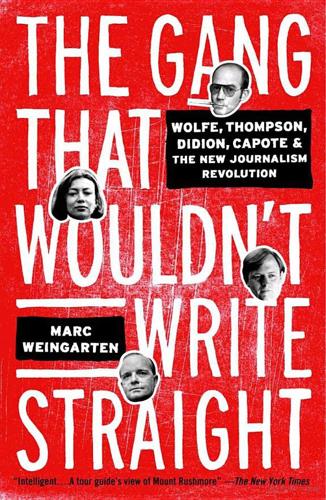
The Gang That Wouldn't Write Straight: Wolfe, Thompson, Didion, Capote, and the New Journalism Revolution
by
Marc Weingarten
Published 12 Dec 2006
Three days later Kesey, who was out of jail on bail raised by his old Perry Lane friends, arrived to a hero’s welcome and barely registered the fact that Wolfe was in his midst, which was only to the writer’s advantage: he could observe Kesey and the Pranksters’ exploits without getting in the way. “We were beyond being freaked out by appearances,” said George Walker, a Merry Prankster and one of Kesey’s most trusted confidants at the time. “Tom was this very patrician guy who I don’t think ever got down to shirtsleeves the whole time he was with us, but we were too busy with our own stuff to pay any attention to him.” Even for a group as willfully unconventional as the Merry Pranksters, it made for a bizarre tableau—a dandy among the heads. Wolfe observed the Prankster preparations for something called the Acid Test Graduation, accompanying Pranksters George Walker, Kesey’s former Stanford colleague Ken Babbs, and others on bus trips to Kesey’s compound in La Honda.
…
The book’s allegory about institutionalized repression resonated with young readers, and the book made Kesey enough money to live comfortably and support his future endeavors. He purchased a plot of land in La Honda, a mountainous rural outpost near Stanford, and began an experiment in communal living with fellow Stanford alumni and various other friends and family members. The group would become known as the Merry Pranksters, with Kesey presiding over it all like a benign pasha. Meals were taken together, women were shared, and drugs were consumed in prodigious quantities. It was Kesey’s firm belief that LSD was a portal to a higher consciousness; the Pranksters proselytized the good word with a series of Acid Tests that transpired all over northern and central California.
…
Wolfe frantically flung questions at Kesey about some statements he had made in the local press about moving “beyond acid,” and Kesey, through the lo-fi crackle of the phone, told him that “it’s time to graduate from what’s been going on, to something else.” When Wolfe asked him why he had publicly announced his retirement from writing, Kesey told him, “I’d rather be a lightning rod than a seismograph.” Wolfe was drawn into Kesey’s force field, taken in by the “strange up-country charisma” of the man. He traveled with some of the Merry Pranksters to an old pie factory on the ground floor of an abandoned hotel on Harriet Street in San Francisco, where they awaited their leader’s return. Wolfe, wearing his white suit and wielding a reporter’s notepad, witnessed men and women wandering around the vast space in white overalls with patches fashioned from American flags.

The Innovators: How a Group of Inventors, Hackers, Geniuses and Geeks Created the Digital Revolution
by
Walter Isaacson
Published 6 Oct 2014
Licklider becomes founding director of ARPA’s Information Processing Techniques Office. Doug Engelbart publishes “Augmenting Human Intellect.” 1963 Licklider proposes an “Intergalactic Computer Network.” Engelbart and Bill English invent the mouse. 1972 1964 Ken Kesey and the Merry Pranksters take bus trip across America. 1965 Ted Nelson publishes first article about “hypertext.” Moore’s Law predicts microchips will double in power each year or so. 1966 Stewart Brand hosts Trips Festival with Ken Kesey. Bob Taylor convinces ARPA chief Charles Herzfeld to fund ARPANET.
…
The combustible combination of creative writing, dropping acid for pay, and working as an orderly in an asylum led to his first novel, One Flew Over the Cuckoo’s Nest. While others were starting electronics companies in the neighborhood around Stanford, Kesey used the proceeds from his book, combined with some acid he had been able to liberate from the CIA experiments, to form a commune of early hippies called the Merry Pranksters. In 1964 he and his posse embarked on a psychedelic cross-country odyssey in an old International Harvester school bus dubbed Furthur (spelling later corrected) painted in Day-Glo colors. Upon his return, Kesey began hosting a series of Acid Tests at his home, and at the end of 1965 he decided, since he was an entrepreneur as well as a hippie, to take them public.
…
He then began a joyful life meandering among different communities at that exciting juncture where performance art and technology intermingle.13 Not surprisingly, life on that techno/creative edge led Brand to become one of the early experimenters with LSD. After being introduced to the drug in a pseudoclinical setting near Stanford in 1962, he became a regular at Kesey’s Merry Prankster gatherings. He also was a photographer, technician, and producer at a multimedia art collective called USCO, which produced events that involved acid rock music, technological wizardry, strobe lights, projected images, and performances that enlisted audience participation. Occasionally they featured talks by Marshall McLuhan, Dick Alpert, and other new age prophets.

Gonzo: The Life of Hunter S. Thompson
by
Corey Seymour
,
Johnny Depp
and
Jann S. Wenner
Published 31 Oct 2007
We drove up through these big evergreens, and we knew that Kesey and the Merry Pranksters were under surveillance at the time. There were narcotics agents and police in the hills looking to catch anybody doing anything wrong. And then we saw this huge banner stretched across the road and across the river that read, “The Merry Pranksters Welcome the Hells Angels.” I can’t imagine what the law must have thought when they saw that sign. Neal Cassady was there, and Ginsberg, and Cassady’s ex-wife. Kesey played this four-hour documentary of the Magic Bus and the Merry Pranksters doing their thing. After a while you couldn’t watch anymore.
…
Little, Brown and Company Hachette Book Group 237 Park Avenue, New York, NY 10017 Visit our website at www.HachetteBookGroup.com The Little, Brown and Company name and logo are trademarks of Hachette Book Group, Inc. First eBook Edition: October 2007 ISBN: 978-0-316-02638-3 Contents Copyright Editor’s Note Foreword Introduction Chapter One: Coming of Age in Louisville Chapter Two: An Itinerant Professional Chapter Three: San Francisco, Hells Angels, and Merry Pranksters Chapter Four: Freak Power in the Rockies Chapter Five: The Golden Age of Gonzo Chapter Six: A New Voice on the Campaign Trail Chapter Seven: Failed Deadlines and a Failed Marriage Chapter Eight: Wreckage in the Fast Lane Chapter Nine: Circling the Wagons at Owl Farm Chapter Ten: A Writer Resurgent Chapter Eleven: Vegas Goes to Hollywood Chapter Twelve: Where Were You When the Fun Stopped?
…
Hunter decided he wanted to be closer to the action, so they moved down to a place right across from the University of California Medical Center in San Francisco. He and I rented a trailer and I moved them down, which was another adventure because the mattress flew out of the trailer, as it usually does. It was there where he mostly wrote Hell’s Angels. CHAPTER THREE San Francisco, Hells Angels, and Merry Pranksters I saw him two days after they beat him up. Both of his eyes were filled with blood. His ribs were taped. He could hardly stand up. SANDY THOMPSON We moved to San Francisco and got a place at the top of Golden Gate Park, right at the edge of the Haight. The Haight-Ashbury scene was just beginning—this was in ’65.

Orange Sunshine: The Brotherhood of Eternal Love and Its Quest to Spread Peace, Love, and Acid to the World
by
Nicholas Schou
Published 16 Mar 2010
It was a total success, a love feast, everybody loving each other. People talk today about ‘free love’ and think that means free sex. But that wasn’t happening en masse. What was happening was people freely loving each other.” As spring turned to summer, the new scene that was unveiling itself in California got even wilder. In San Francisco, Ken Kesey’s Merry Pranksters were still recovering from their whirlwind bus tour across America, captured in vivid, surreal detail in Tom Wolfe’s book Electric Kool Aid Acid Test. In June, groups like the Grateful Dead, Jefferson Airplane, the Byrds, Jimi Hendrix and the Who headlined at the Monterey Pop Festival. Haight-Ashbury had become the center of the hippie culture.
…
He spent the Summer of Love with Tunnell dealing acid through their connections with the San Francisco chapter of the Hell’s Angels, which dealt LSD directly for Art Risley’s friend Owsley, the first chemist to figure out how to make LSD in tablet form. It was Owsley’s acid that enlivened Ken Kesey and the Merry Prankster’s so-called acid tests, wild days-long rites of weirdness that featured occasional efforts to play music by the Dead. Owsley, who now lives in Australia, insists he never dealt directly for anyone associated with the Brotherhood of Eternal Love. He refused to say anything about the group, whose members he dismisses as a “bunch of loose cannons on a ship of fools.”
…
“I knew very little about their activities and wanted to stay away from their drug deals,” he says. “My understanding is that Tim stayed away from that as well. He didn’t need to be involved. The Brothers provided him with all the drugs he needed and a place to stay. He was like the patron saint but not in an executive role.” Another visitor to Idyllwild in early August 1968 was Merry Prankster Ken Kesey, who dropped by for a brief stay before he, Leary, and the rest of the Brotherhood’s ranch contingent headed down the mountain to the Orange County Fairgrounds in Costa Mesa for the Newport Pop Festival of 1968. There, on August 2 and 3, a crowd of a hundred thousand hippies assembled for what was then the biggest rock festival in Southern California history, headlined by a psychedelic laundry list of bands ranging from Jefferson Airplane and the Grateful Dead to Country Joe and the Fish, Canned Heat, Steppenwolf, the Byrds, and Eric Burdon and the Animals.
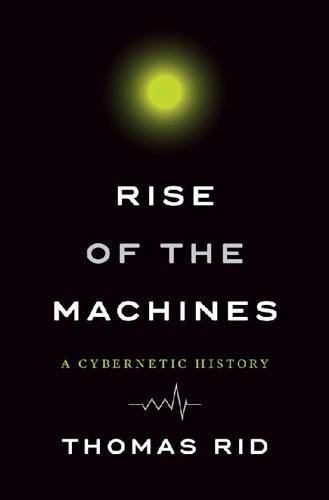
Rise of the Machines: A Cybernetic History
by
Thomas Rid
Published 27 Jun 2016
The players were captivated, for hours, intense, frenzied—a spasmic grip on the keyboard and a trancelike gaze firmly fixed on the tiny, low-resolution screen, according to Brand “the most bzz-bzz-busy scene I’ve been around since the Merry Prankster Acid Tests”64—the legendary wild parties that took place at the end of 1965 and throughout 1966 in the San Francisco Bay Area, to experiment with psychedelic drugs. Ecstatic Merry Prankster partygoers were drenched in black lights against fluorescent paint, whipped up by stroboscopes, and entranced by the Grateful Dead’s first performances. The Whole Earth editor instantly saw the cultural appeal of this machine.
…
Their demographics and common interests alone made this online community a unique cultural phenomenon, in a “self-absorbed, cabalistic way,” observed journalist Katie Hafner in a Wired article about the WELL that has become a classic.79 One enthusiastic WELL member was Ramon Sender Barayón, a.k.a. “rabar,” a San Francisco artist and writer. With the Merry Pranksters, Sender had coproduced the now legendary 1966 Trips Festival, a formative event for the hippie movement. Initially, he had difficulty with PicoSpan, the clunky conferencing software, “but then I felt the energies on the WELL,” he recalled. It reminded me of the Open Land communes I’d been to in the 1960s.
…
“It was that whole San Francisco mixture of psychedelia and computer technology,” remembered Erik Davis, who attended as the Village Voice rock critic.128 Davis said he’d gone because he had always been fascinated by psychedelics, the occult, and weird religious ideas. Some started calling the event the “Acid Test of the Nineties,” in reference to the Merry Pranksters of the sixties. VR was powerful. Seeing the new technology with their own goggles convinced many skeptics. “Maybe all the mystical talk about the technology and how it will change communication, play, and work isn’t so mystical after all,” Keizer mused.129 Orenstein also recalled arriving at the Cyberthon maze “curious, but terribly smug,” indeed with what she called a neo-Luddite feeling of superiority.

Surveillance Valley: The Rise of the Military-Digital Complex
by
Yasha Levine
Published 6 Feb 2018
Computer-generated music filled the air, and weird lights projected on the walls. Was this a military-funded Stanford computer lab or a psychedelic Jefferson Airplane concert? To Brand, it was both, and much more. He marveled at “a fifteen-ring circus in ten different directions” going on around him. It was “the most bzz-bzz-busy scene I’ve been around since Merry Prankster Acid Tests.”8 At the time, the atmosphere around Stanford was charged with anti-ARPA sentiment. The university had just come off a wave of violent antiwar protests against military research and recruitment on campus. Activists from Students for a Democratic Society specifically targeted the Stanford Research Institute—a major ARPA contractor deeply involved in everything from the ARPANET to chemical weapons and counterinsurgency—and forced the university to cut official ties.
…
The way he described it, you’d think that working for ARPA was the most subversive thing a person could do. Cults and Cybernetics Brand was thirty-four and already a counterculture celebrity when he visited Stanford’s AI Lab. He had been the publisher of the Whole Earth Catalog, a wildly popular lifestyle magazine for the commune movement. He ran with Ken Kesey and his LSD-dropping Merry Pranksters, and he had played a central role in setting up and promoting the psychedelic concert where the Grateful Dead debuted and rang in San Francisco’s Summer of Love.10 Brand was deeply embedded in California’s counterculture and appeared as a major character in Tom Wolfe’s The Electric Kool-Aid Acid Test.
…
I will fight to avoid becoming a number—to others and to myself.”13 After college, Brand enrolled in the US Army and trained as a parachutist and a photographer. In 1962, after finishing his service, he moved to the Bay Area and drifted toward the growing counterculture. He hooked up with Kesey and the Merry Pranksters, took a lot of psychedelic drugs, partied, made art, and participated in an experimental program to test the effects of LSD that, unknown to him, was secretly being conducted by the Central Intelligence Agency as part of its MK-ULTRA program.14 While the New Left protested against the war, joined the civil rights movement, and pushed for women’s rights, Brand took a different path.
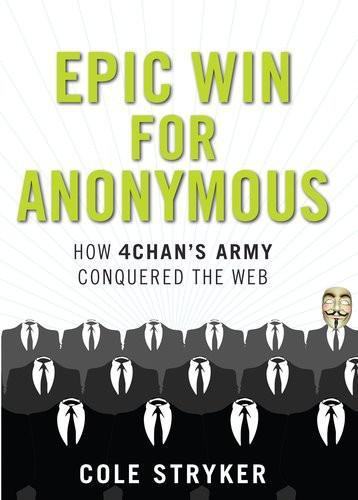
Epic Win for Anonymous: How 4chan's Army Conquered the Web
by
Cole Stryker
Published 14 Jun 2011
ISBN 978-1-590-20738-3 For Charles and Janet Stryker, who once told me, “You’re not going to get very far in this world without knowing how to work a computer,” and then gave me one. Contents INTRODUCTION Chapter 1: Memes: Shared Nuggets of Cultural Currency Chapter 2: Discovering 4chan Chapter 3: 4chan in a Day Chapter 4: Tracing 4chan Ancestry Chapter 5: The Rise of 4chan Chapter 6: The Meme Industry Chapter 7: The Meme Life Cycle Chapter 8: Merry Pranksters, Freedom Fighters, or Sadistic Bullies? Chapter 9: The Anti-Social Network EPILOGUE Acknowledgments Bibliography Introduction THIS IS THE story of the most interesting place on the Internet: an imageboard called 4chan, where you’re as likely to find a hundred photos of adorable kittens as a gallery of gruesome autopsy photos.
…
We’ve already seen how anonymous trolls tried to ruin Jessi Slaughter’s life. What would happen if they went after global corporations or political candidates of the highest order? What happens when a toddler gets bored building sandcastles? He totters over to the next kid’s creation and obliterates it with one unexpected kick. Chapter 8 * * * Merry Pranksters, Freedom Fighters, or Sadistic Bullies? IN 2008 I was living in England, writing for a travel company. I remember returning from a trip to Spain, exhausted and dirty after a weekend of no sleep and near-missed departures. I transferred from the Eurostar train as the sun rose over London when I spotted a portly fellow in a Guy Fawkes mask wobbling toward me.
…
Last modified September 18, 2008, http://www.wired.com/threatlevel/2008/09/palin-e-mail-ha/. Содержание INTRODUCTION Chapter 1: Memes: Shared Nuggets of Cultural Currency Chapter 2: Discovering 4chan Chapter 3: 4chan in a Day Chapter 4: Tracing 4chan Ancestry Chapter 5: The Rise of 4chan Chapter 6: The Meme Industry Chapter 7: The Meme Life Cycle Chapter 8: Merry Pranksters, Freedom Fighters, or Sadistic Bullies? Chapter 9: The Anti-Social Network EPILOGUE Acknowledgments Bibliography
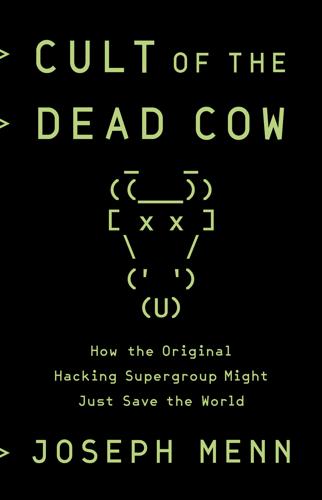
Cult of the Dead Cow: How the Original Hacking Supergroup Might Just Save the World
by
Joseph Menn
Published 3 Jun 2019
Grateful Dead guitarist Jerry Garcia personally approved Dryden’s joining Airplane, and members of both bands and their mutual friends lived together in Haight-Ashbury and other San Francisco neighborhoods. Along with shared creative efforts and antiestablishment attitude, that deep alliance meant experimental social structure, early technological adoption, and, as Mann put it, “better living through chemistry.” Even before the Dead had their name, they were a part of Ken Kesey’s Merry Pranksters, the eclectic and idealistic group that drove through America to have fun messing with people and to spread the good news about LSD. Another Prankster, visionary writer and marketer Stewart Brand, would also help spread the good news about the coming age of computing. Brand’s outlets included the ecology-oriented magazine Whole Earth Catalog and the WELL, the pioneering West Coast online community.
…
The swapping of those tapes deepened the Dead’s connections with fans and foreshadowed music-sharing services like Napster. Jesse’s unorthodox heritage prepared him well to bring a major innovation to cDc and the broader hacking scene: the modern hacking conference. And it was one of the reasons that Jesse helped turn cDc into a 1990s successor to the Merry Pranksters, as Barlow saw it. Like the Pranksters, the group would exude idealistic joy at tweaking the establishment and describing the rapidly evolving world they saw and that the grown-ups were somehow missing. “Humor is one of the great binding things in the world,” Barlow said, and something that cDc shared with the Pranksters was using humor to question the legitimacy of power.
…
See software programs, malicious Mandiant, 134 Mann, Sally, 22–23 Manning, Chelsea (formerly Bradley), 143–144 Marlinspike, Moxie, 152, 162, 178 Masters of Deception (MoD), 25–29, 32, 54 Matasano Security, 125 Mathewson, Nick, 129, 140, 155 Matlock. See Noonan, Timothy Mayer, Marissa, 198 McAfee, 29, 107 McGill University, 166 MCI, 10, 12–13 media, cDc relationship with, 58–62, 67–68, 80. See also Hong Kong Blondes Medium (website), 99 Mentor, the, 44 Mercer, Rebekah, 196 Mercer, Robert, 196 Merry Pranksters, 22–23 Messiah Village, 48–49 Metasploit, 177 #MeToo, 158 Microsoft, 37, 63, 108, 196, 212 BackOffice software, 66, 69 Back Orifice, response to, 67–69, 77, 82–83, 96–97 hackers working for, 38, 50, 111–112, 122–124, 193 security vulnerabilities, 45, 56, 72–73, 82–83, 85, 111–112 See also Back Orifice; Windows military, 74, 78, 117–118, 136, 185, 209 See also United States government Miller, Charlie, 178–179 Miloševic, Slobodan, 102–103 MindSpring, 68 MindVox, 30–32, 63, 145 MIT, 37–38, 40, 45–46, 50, 53, 72–73 Mitnick, Kevin, 35, 44 Mixter.
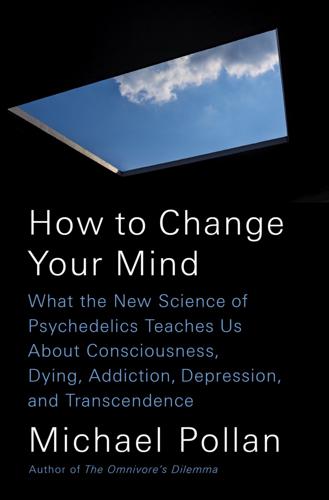
How to Change Your Mind: What the New Science of Psychedelics Teaches Us About Consciousness, Dying, Addiction, Depression, and Transcendence
by
Michael Pollan
Published 30 Apr 2018
Overhead, beneath the peak, is a massive round stained glass depicting “The Universality of the Mycelial Archetype”—an intricate tracery of blue lines on a night sky, the lines representing at once mycelium, roots, neurons, the Internet, and dark matter. Displayed on the walls heading upstairs from the living room are framed artworks, photographs, and keepsakes, including a diploma signifying the successful completion of one of the Merry Pranksters’ Acid Tests, signed by Ken Kesey and Neal Cassady. There are several photographs of Dusty posing in old-growth forests with impressive specimens of fungi and a colorfully grotesque print by Alex Grey, the dean of American psychedelic artists. The print is Grey’s interpretation of the so-called stoned ape theory, depicting an early, electrified-looking hominid clutching a Psilocybe while a cyclone of abstractions flies out of its mouth and forehead.
…
Andrew Weil, best known for his books on holistic medicine; the psychedelic chemist Sasha Shulgin and his wife, Ann; and the New York Botanical Garden mycologist Gary Lincoff—arrived to great fanfare in a psychedelically painted school bus piloted by Ken Kesey. (The bus was called Farther, the successor to Further, the original Merry Prankster bus, evidently no longer roadworthy.) The proceedings looked more like a Dionysian revel than a conference, yet there were some serious talks. Jonathan Ott delivered a brilliant lecture on the history of “entheogens”—a term he helped coin. He traced their use all the way back to the Eleusinian mysteries of the Greeks, through the “pharmocratic inquisition,” when the Spanish conquest suppressed the Mesoamerican mushroom cults, and forward to the “entheogenic reformation” that has been under way since R.
…
Unbeknownst to Kesey, his first LSD trip was bought and paid for by the CIA, which had sponsored the Menlo Park research as part of its MK-Ultra program, the agency’s decade-long effort to discover whether LSD could somehow be weaponized. With Ken Kesey, the CIA had turned on exactly the wrong man. In what he aptly called “the revolt of the guinea pigs,” Kesey proceeded to organize with his band of Merry Pranksters a series of “Acid Tests” in which thousands of young people in the Bay Area were given LSD in an effort to change the mind of a generation. To the extent that Ken Kesey and his Pranksters helped shape the new zeitgeist, a case can be made that the cultural upheaval we call the 1960s began with a CIA mind-control experiment gone awry
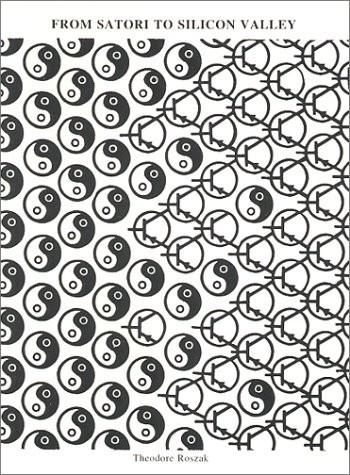
From Satori to Silicon Valley: San Francisco and the American Counterculture
by
Theodore Roszak
Published 31 Aug 1986
to publicize But by the early had found another, many sixties, the therapeutic hallucinogens less respectable public; they among being touted its were the beat poets and dropped-out kids in the streets of Haight-Ashbury and Green- wich Village as the salvation of our troubled culture. Soon Timothy Leary was proselytizing Bay Area, across America; in the for dope Ken as of 1966, Kesey and his Merry Pranksters were blithely dosing whole audiences on ising to do this so) at the mysterious elixir (or prom- Acid Tests and at the Trips Festival. The assumption underlying tribution efforts these mass dis- was blunt and simple: dope saves your soul. Like the Catholic sacraments, effect ex opere operato Once this - by its it takes very ministration.
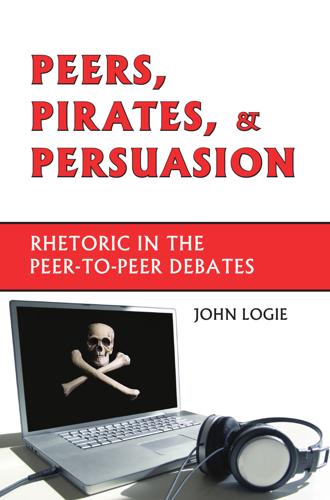
Peers, Pirates, and Persuasion: Rhetoric in the Peer-To-Peer Debates
by
John Logie
Published 29 Dec 2006
While at first blush, the quasi-militaristic personae of the astronauts would appear to be wholly at odds with the politics of hippie/yippie cultures, both NASA and hippie leaders foregrounded their commitments to exploration in their personal and public presentations. While there is (almost) a world of difference between the Eagle lunar lander and the Merry Pranksters’ psychedelic tour bus, both share a commitment to traveling as far as possible, whether it be in outer space or “inner space.” Histories of the Internet have long acknowledged the degree to which the architects of the Internet understood their work as an extension of the countercultural movements of the 1960s.
…
Lewis and Clark, 26 LEXIS-NEXIS, 14 libraries, 14–15, 18, 19, 117, 143–48 Library of Congress, 146–47 Limewire, 86, 103, 119 Litman, Jessica, 20, 67–69, 81–82, 88, 114, 126; Digital Copyright, 14, 67, 114 LoadPod, 64 logos, 7 LokiTorrent, 123 Love, Courtney, 118 LP (long playing record), 117 Lucas, George, 43 Luckombe, Philip, 69 Lunsford, Andrea, 20, 130–32 Madonna, 40, 119, 124 Madonna Remix Project, 119, 124 Mailloux, Steven: rhetorical hermeneutics, 21–22 Malcom, John, 123 Manson, Marilyn, 9 McLuhan, Marshall, 2 Menn, Joseph: All the Rave, 32–36, 40, 44; copy-protected eBook edition of ,142–143 Merriden, Trevor: Irresistible Forces, 36, 108 Merry Pranksters, 26 Metallica, 5, 40–43, 53, 55, 104, 116, 145 MGM v. Grokster, 128–41 MIT (Massachusetts Institute of Technology), 23 Morpheus, 136 MP3, 4, 9, 10–13, 40, 56, 59, 62–65, 80, 82, 85– 88, 91, 94–96, 102–4, 109, 111, 113, 119, 135 wwwww. p a r l or p r e s s . c om Index MP3.com: my.mp3.com, 59, 77–82; Beam-It, 77, 79 MPAA (Motion Picture Association of America), 6, 82, 105–6, 123, 125, 149 MTV (Music TeleVision), 41, 43 Napster: popularity of, 3–6; roots in hacker community 32–44; iconography 35, 127; associated with theft, 52– 56, and Betamax standard 58; efficiencies of 59; ties to rock and hip-hop 63–64; positioned as enabling piracy, 67–68; 77–82, community building features of 96; as revolutionary 109–10 Napster 2.0, 122, 127, 135 NASA (National Aeronautics and Space Administration), 25–26 NET (No Electronic Theft) Act of 1997, 49, 52, 141 New York Times, 44, 74, 86, 105, 115, 116, 122, 129, 131 Newton, Isaac, 69 Nixon, Richard, 42 Northeastern University, 4, 37, 40 NWA (Niggaz With Attitude), 41 Oberholzer, Felix, 54 OED (Oxford English Dictionary), 68–70 Oliver, Kenneth, 132 open source software, 9 Parody Doctrine, 123 Patel, Marilyn Hall, 56–57, 67 pathos, 7, 54 Patterson, Lyman Ray, 45–49 PDF (Portable Document Format), 143–46 Peel, John, 87 peer-to-peer, Napster as model 3–5, 43–44; post-Napster Pa r l orPr e s s Index popularity 6; debates over 6–8,12, 20–21, 51, 76, 83, 100, 107, 114–17, 120–21, 126, 143, 146; use by colleges 14, 19, 145; putative impact on record sales 54; users portrayed as thieves, 60; efficiency of 64–65, 77, 86; dependence upon “shared folders” 92–93, 98–99; downloads of motion pictures, 105; potential of, 126, 127, 141, 143,145–48 ; as foundational to Internet, 128–29 permission requests, 15, 24, 42–43, 55, 61, 69, 82–83, 100–4, 143, 147, 149, 150 Perry, Lee “Scratch,” 124 photocopier, 140 Pierre-Louis, Stanley, 92 piracy, in Ukraine 9–11, VCR as tool for 57; shifts in meaning 67–84 Pirates of the Caribbean, 71, 73, 76 plagiarism, 131 player piano, 129 Pop, Iggy, 10–11 Porter, James E., 20, 130 Presley, Elvis, 42 public domain, 8, 100–3, 126, 147 public policy, 7, 43, 61, 108 R.E.M., 10 Rader (Slashdot pseudonym), 112–13, 117 Rakoff, Jed, 81 record industry, 11, 39, 116–18 record labels, 3, 4, 11, 35, 90, 112 reel-to-reel tape, 117 Rehnquist, William, 139 Rhapsody, 122, 135 Rhetoric Review, 130, 156 rhetorical theory, 7, 38, 107–8, 120–21 wwwww. p a r l or p r e s s . c om 163 RIAA (Recording Industry Association of America): suit against Napster 6, 34; lawsuit campaign against users of peerto-peer networks by, 6, 86–93, 97, 99, 121; use of hyperbole, 52–56, 66, 68, 77–82; positioned as tyrant 110; price-fixing 112; uploading of bogus fules 119; arguments against copying music onto computers, 134–35; participation in Grokster case,136 Richardson, Eileen, 40 Ritter, Jordan, 33 Robertson, Michael, 77–83 Robin Hood, 106 Rosen, Hilary, 79, 82 Ross, Andrew, 31–32, 35, 44 Rothstein, Edward, 116 Royster, Jacqueline Jones, 20 Scalia, Antonin, 137 SDS (Students for a Democratic Society): Port Huron Statement, 27 Seabiscuit: variable prices of editions across media 72–76 Secor, Marie, 120 Segaller, Stephen, 26–28 Selfe, Cindy, 130 September 11, 2001 terrorist attacks, 105 SETI (Search for ExtraTerrestrial Intelligence), 147–48 Sharman BV, 136 Slashdot, 112–14 Sonny Bono Copyright Term Extension Act of 1999, 101, 129, 141 Sony, 57, 108, 122, 133, 137-39 Sony v.
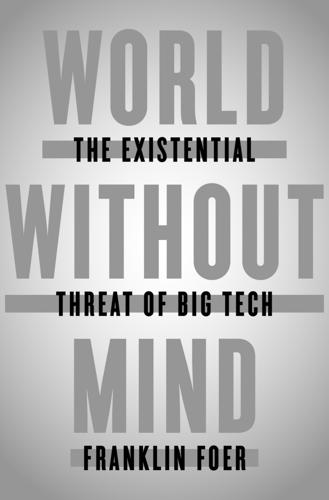
World Without Mind: The Existential Threat of Big Tech
by
Franklin Foer
Published 31 Aug 2017
(He began messing around with acid in 1962, when it could be procured from legitimate medical experimenters.) Brand was the master of the uptight, straitlaced tasks that flummoxed most of his long-haired friends—renting a hall, publicizing an event. When he linked up with the writer Ken Kesey and his storied posse of drug-dabbling Merry Pranksters, he represented the “restrained, reflective wing” of that Day-Glo band of hipsters, at least in The Electric Kool-Aid Acid Test, Tom Wolfe’s travelogue through the emerging counterculture. Though Brand wore a top hat with a flower, and he spoke in impish aphorisms, he remained a neatnik with a filing cabinet.
…
Having absorbed Brand into their work, the PARC engineers let him hang out in their lab. He would describe what he saw in a seminal article that he wrote for Rolling Stone in 1972. The article was a vivid, energetic piece of New Journalism: “The most bzz-bzz-busy scene I’ve been around since Merry Prankster Acid Tests.” Brand depicted the computer scientists exactly as he wanted to see them—as the great emancipators of technology: “Those magnificent men with their flying machines, scouting a leading edge of technology which has an odd softness to it; outlaw country, where rules are not decree or routine so much as the starker demands of what’s possible.”
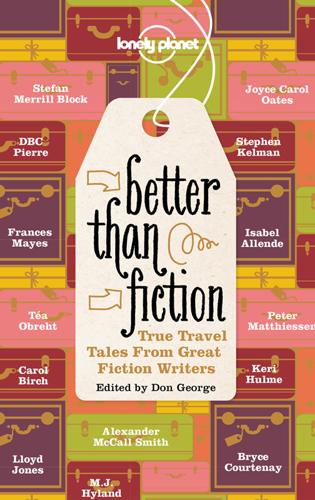
Better Than Fiction
by
Lonely Planet
The most hell-bent of my companions, unable to abide throwing away perfectly good hallucinogens, swallowed his entire two-gram stash in Laredo.) At a Woolworth’s in Laredo we bought a tube of Brylcreem, and for $3 apiece the squarest dress shirts we could find. Those of us with mustaches and sideburns shaved. Voilà! De-counter-culturalized, looking more like Mormon missionaries or The Partridge Family’s nerd cousins than Merry Pranksters or Easy Rider dudes, we were waved right across by two sets of border guards, out of America and into Mexico. My recollection of most of the trip is strangely vague. I know we slept on the bus and ate mostly bread, cheese, cold cuts and fruit. I do remember certain specific, redolent neo-ugly-American moments – blasting Traffic’s The Low Spark of High Heeled Boys out of our open door and windows as we rumbled through small towns, leaving scraped streaks of chrome yellow on masonry walls as we squeezed down streets barely wider than the bus.
…
We awoke at sunrise, performed quick ablutions in the family’s single bathroom, ate Fernando’s mother’s breakfast of scrambled eggs and tortillas, offered money that was refused and refused again, reboarded the bus and headed out, on the road again, more than ever ready for adventures. But nothing else on the trip – not our first visit to Las Vegas (Hunter Thompson’s Fear and Loathing, published the previous fall, was a kind of sacred text), not our first visit to Disneyland (the Merry Pranksters had been headed for the World’s Fair in 1964), not the archetypal young California blonde speeding around a curve in Big Sur and smashing her yellow convertible into our parked bus – was as wondrous as our impromptu soccer match in that ragged, random, impossibly hospitable Mexico City barrio whose name I don’t remember and maybe never knew.

The Rise and Fall of the Neoliberal Order: America and the World in the Free Market Era
by
Gary Gerstle
Published 14 Oct 2022
Stewart Brand, the man who invented the phrase “personal computer” and who is credited with helping generations of nerds and hackers to imagine the full potential—and freedom—of cyberspace, spent time in the 1960s alternating between two enthusiasms: first hanging out with Ken Kesey’s group of crazed “merry pranksters” and participating in the psychedelic parties Kesey was hosting at his home near the Stanford University campus; and second, publishing the Whole Earth Catalog, a paperback book of giant dimensions, each page packed with products and how-to information needed by individuals who were fleeing Moloch for communes where they could lead autarchic and self-sufficient lives.67 The Whole Earth Catalog eliminated the advertising, brand promotion, and mindless captions that filled the pages of just about every other catalogue and magazine in the United States at the time.
…
Meanwhile, unemployment had shrunk to 3.8 percent, the lowest in more than a generation.43 “Never before,” the president exulted in his 2000 State of the Union address, “has our nation enjoyed, at once, so much prosperity and social progress with so little internal crisis and so few external threats.”44 High tech was the straw stirring the American economy’s resurgence. Stewart Brand and his band of tech hipsters had completed the journey from acid-besotted merry pranksters to cybernetic masters of the universe, increasingly toasted at gatherings of the world’s economic and governmental elites at Aspen and Davos.45 This internet revolution was closely tied ideologically to visions of market freedom. Four cyberspace enthusiasts—Esther Dyson, George Gilder, George Keyworth, and Alvin Toffler—encased their IT vision in a manifesto, “Cyberspace and the American Dream: A Magna Carta for the Knowledge Age,” which they circulated in 1994.
…
Bernstein, “The Conservative Achievements of Liberal Reform,” in Barton J. Bernstein, ed., Towards a New Past: Dissenting Essays in American History (New York: Pantheon, 1968), 263–288; Martin Sklar, The Corporate Reconstruction of American Capitalism, 1890–1916: The Market, the Law, and Politics (New York: Cambridge University Press, 1988). 67.On Kesey and the Merry Pranksters, see Tom Wolfe, The Electric Kool-Aid Acid Test (1968; New York: Bantam Books, 1969). 68.Stewart Brand, Whole Earth Catalog, 1st ed. (Menlo Park, CA: Portola Institute, 1968). 69.Anna Wiener, “The Complicated Legacy of Stewart Brand’s ‘Whole Earth Catalog,’ ” New Yorker, November 16, 2018, https://www.newyorker.com/news/letter-from-silicon-valley/the-complicated-legacy-of-stewart-brands-whole-earth-catalog, accessed April 10, 2021; Fred Turner, From Counterculture to Cyberculture: Stewart Brand, the Whole Earth Catalogue, and the Rise of Digital Utopianism (Chicago, IL: University of Chicago Press, 2006), 61–62; Margaret O’Mara, The Code: Silicon Valley and the Remaking of America (New York: Penguin Press, 2019).

Stealing Fire: How Silicon Valley, the Navy SEALs, and Maverick Scientists Are Revolutionizing the Way We Live and Work
by
Steven Kotler
and
Jamie Wheal
Published 21 Feb 2017
Thompson, the Hells Angels, and Neal Cassady (from Kerouac’s On the Road fame) all showed up, as did a strange little band called the Grateful Dead, led by a chinless but oddly magnetic guitarist named Jerry Garcia. Armed with gallons of day-glo paint,23 strobe lights, and the prototypical art car, a tricked out 1939 International Harvester bus named “Further,” Kesey and his Merry Pranksters birthed West Coast psychedelic culture. Control of the Master Switch had been wrestled away from the spooks, and neither Silicon Valley nor the wider world would ever be the same. Over the next decade, Eastern mysticism, liberated sexuality, and “following your bliss” mounted a direct challenge to the traditional values of mainstream America.
…
With Doctors without Borders as their inspiration: Daniel Terdiman, “Burn on the Bayou’ Showcases Burning Man Participants’ post-Katrina Relief Efforts,” CNET, March 24, 2008. Additional resources are the film Burn on the Bayou, Black Rock City LLC, 2008, and the organization’s website, www.burnerswithoutborders.org. 19. Warner has a resume: Brian Calvert, “The Merry Pranksters Who Hacked the Afghan War,” Pacific Standard, July 1, 2013. Dave Warner is a fascinating character, brilliant, iconoclastic, and highly productive. See also Andreas Tzortzis, “Learning Man,” Red Bull Bulletin, August 2014. 20. “I’m dismantling the Death Star”: Ibid. 21. With so much experience in self-organizing”: Peter Hirshberg, From Bitcoin to Burning Man and Beyond ([N.p.]: Off the Common Books, 2014). 22.
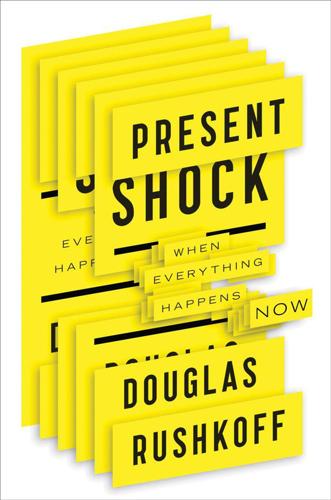
Present Shock: When Everything Happens Now
by
Douglas Rushkoff
Published 21 Mar 2013
This notion of temporal diversity offers a new way of understanding the particular characteristics of different timescales. While chronobiologists looked at the various natural cycles influencing the processes of life, proponents of temporal diversity are encouraging us to understand and distinguish between the different rates at which things on different levels of existence change. Former Merry Prankster and Whole Earth Catalog founder Stewart Brand applied temporal diversity to different levels of society. In his book The Clock of the Long Now, he argues that we live in a world with multiple timescales, all moving simultaneously but at different speeds. Brand calls it the order of civilization.
…
As long as people didn’t engage with one another and were instead kept happily competing with one another, their actions, votes, and emotions remained fairly predictable. Screech could be kept to a minimum. But the Cold War gave rise to something else: a space race, and the unintended consequence of the first photographs of planet Earth taken from the heavens. Former Merry Prankster Stewart Brand had been campaigning since 1966 for NASA to release a photo of Earth, aware that such an image could change human beings’ perception of not only their place in the universe but also their relationship to one another. Finally, in 1972, NASA released image AS17-148-22727, birthing the notion of our planet as a “big blue marble.”

Valley of Genius: The Uncensored History of Silicon Valley (As Told by the Hackers, Founders, and Freaks Who Made It Boom)
by
Adam Fisher
Published 9 Jul 2018
The code name for each new product was named after some hot girl on the assembly line. He really did have that master-of-the-universe thing. I mean there was coke with the assembly-line girls in the hot tub. This guy did the whole Cash McCall thing. He was just throwing out sparks in every direction. David Kushner: Nolan really was the Merry Prankster of Silicon Valley, and so he attracted all the other Merry Pranksters who had nowhere else to go. Al Alcorn: It was fun. Ralph Baer: They made a couple hundred Pong games during 1972 toward the end of the year. And it was thirteen thousand Pong games the next year. The competition made more than that, everybody was making knockoffs.
…
Excited by the success of this new and very social medium, Brand was sucked in—and burned. He discovered that The Well had a darker side, too. Flame wars, trolling, cyberbullying: All the social media dysfunction that is so familiar today came as a disturbing shock in the mideighties. Larry Brilliant: I knew Stewart Brand from the Merry Prankster days and the Hog Farm days. Stewart Brand: It was mainly through the Hog Farm. Larry Brilliant had been there as a kind of a resident physician. Ram Dass: He used to be known as Dr. America. The Hog Farm was a hippie commune in Berkeley, run by a fellow named Wavy Gravy. Stewart Brand: And I also knew Larry Brilliant by reputation: what he had done suppressing smallpox in India, and eliminating it, eventually.

Polaroids From the Dead
by
Douglas Coupland
Published 1 Jan 1996
And so they do—down past the now-rusted melted stoves and heating tanks of the ex-mansions, down onto Highway 24, which connects to the once-quake-pancaked Interstate 880 Nimitz Freeway, then toward the Coliseum parking lot, licking their Bart Simpson acid and dodging jackknifed big rigs and liquid oxygen spills along the way, Scott amusing his friends with tales of his hypothetical career working in the used-car lots of Antarctica. “In the 1960s they had Merry Pranksters,” says Cheyenne. “What do we have now?” “Wacky funsters,” answers Scott. “Look!” says Amy, rolling down her window amid the entranceway gridlock of VW microbuses. “A Tricia Nixon dress—that’s so cool.” “History is cool,” says Todd, nodding. Scott, Amy, Todd and Cheyenne near the concert.

Tripping on Utopia: Margaret Mead, the Cold War, and the Troubled Birth of Psychedelic Science
by
Benjamin Breen
Published 16 Jan 2024
Mead had long called for a truly diverse and broad-based global cultural change. Yet while the psychedelic counterculture embraced “non-Western spirituality,” it did so in a superficial and romanticized way that did not truly challenge Western cultural norms. Tom Wolfe memorably described Stewart Brand (who drives the Merry Pranksters’ bus through the opening pages of The Electric Kool-Aid Acid Test) as wearing “just an Indian bead necktie on bare skin and a white butcher’s coat with medals from the King of Sweden on it.” Underneath the costumes, however, were bodies that were almost invariably American, white, middle class, and male.
…
Officially, he was a lecturer in anthropology, but he also became something of a guru to the student body, who lined up for his office hours and recorded his wisdom for future reference. Bateson and Lois moved into a farmhouse on a semi-commune in the Santa Cruz Mountains, just down the road from Ken Kesey and his Merry Pranksters. It was rumored on campus that “there was some kind of connection” between them. Bateson’s connection to another pioneer of psychedelic science turned UCSC professor—Timothy Leary’s friend and research partner, Frank Barron—was clearer. The two men could often be found lunching at a strip-mall Polynesian restaurant called Zanzibar.
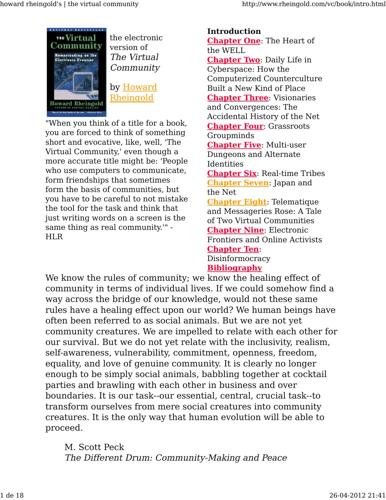
Howard Rheingold
by
The Virtual Community Homesteading on the Electronic Frontier-Perseus Books (1993)
Published 26 Apr 2012
Brand had been part of the faculty at an online institute devoted 26-04-2012 21:42 howard rheingold's | the virtual community 4 de 27 http://www.rheingold.com/vc/book/2.html to stretching the imaginations of business leaders--the Western Behavioral Sciences Institute (WBSI)--which introduced him to the effectiveness of computer conferencing. WBSI was also where he connected with Larry Brilliant. Brilliant and Brand shared a history at the center of several of the most colorful events of the 1960s: Brand was "on the bus" with Ken Kesey and the Merry Pranksters (Kesey's pot bust, as described in Tom Wolfe's Electric Kool-Aid Acid Test, happened on the roof of Brand's apartment; Brand was one of the organizers of the seminal Trips Festival that gave birth to Bill Graham Presents and the whole rock concert scene). Brilliant had been part of the Prankster-affiliated commune, the Hog Farm (which had organized the security arrangements for Woodstock around the judicious use of cream pies and seltzer bottles and had whipped up "breakfast in bed for 400,000").
…
A third cultural element making up the initial mix of the WELL, which otherwise has drifted far from its counterculture origins in many ways, were the Deadheads. Books and theses have been written about the subculture that has grown up around the band the Grateful Dead. They had their origins in the same milieu that included the Merry Pranksters, the Hog Farm, and the Whole Earth Catalog. The Deadheads, many of whom weren't born when 26-04-2012 21:42 howard rheingold's | the virtual community 12 de 27 http://www.rheingold.com/vc/book/2.html the band started touring, have a strong feeling of community that they can manifest only in large groups when the band has concerts.
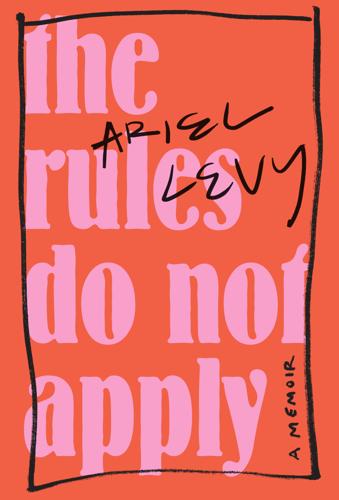
The Rules Do Not Apply
by
Ariel Levy
Published 14 Mar 2017
She was six feet tall with a haircut that reminded me of Johnny Cash and tattoos winding up and down both arms, many of which she had done herself. Lamar was the baddest, butchest dyke I’d ever met, a great big pirate of a woman. As she put it, “If you look at me, there’s no question about it: I’m a dyke. I am gay. If you don’t think so, there is something really wrong with you.” But she wasn’t just tough, she was fun, “the Merry Prankster of the women’s movement,” as one of her ex-husbands described her (there were three of them before she discovered lesbianism). It was a story about the way the counterculture of the sixties and seventies promised a life of radical rebellion, and about what happened after the romance of revolution burned off.
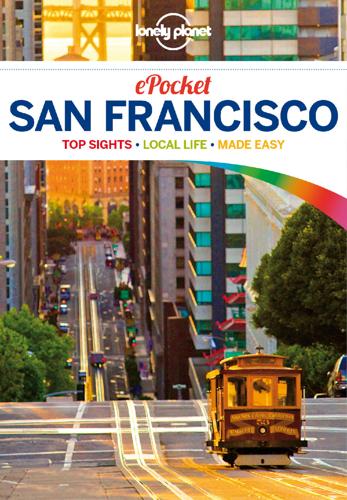
Lonely Planet Pocket San Francisco
by
Lonely Planet
and
Alison Bing
Published 31 Aug 2012
Thousands rallied in outrage, and when McCarthy left town in a hurry, it marked the beginning of the end of the repressive McCarthy era. In a pronounced lapse in screening judgment, the CIA hired local writer Ken Kesey to test psychoactive drugs intended to create the ultimate soldier. Instead, they unwittingly inspired Kesey to write the novel One Flew Over the Cuckoo’s Nest, drive psychedelic busloads of Merry Pranksters across country, and introduce San Francisco to LSD and the Grateful Dead. Another LSD tester hired by the CIA, Stewart Brand, proposed an outrageous idea inspired by his LSD experiments: the complex technology governments used could empower ordinary people. The machines would be called ‘personal computers.’

San Francisco
by
Lonely Planet
But neither jokes nor striptease would pop the last button of conventional morality in San Francisco – no, that was a job for the CIA. In a pronounced lapse in screening judgment, the CIA hired local writer Ken Kesey to test psychoactive drugs intended to create the ultimate soldier. Instead, they unwittingly inspired Kesey to write the novel One Flew Over the Cuckoo’s Nest, drive psychedelic busloads of Merry Pranksters across country, and introduce San Francisco to LSD and the Grateful Dead at the legendary Acid Tests. After the Civil Rights movement anything seemed possible, and for a while it seemed that the freaky force of free thinking would stop the unpopular Vietnam War. At the January 14, 1967 Human Be-In in Golden Gate Park, trip-master Timothy Leary urged a crowd of 20,000 to dream a new American dream and ‘turn on, tune in, drop out.’
…
➡ Hell’s Angels: A Strange and Terrible Saga (Hunter S Thompson) This spare-no-details account of the outlaw Bay Area motorcycle club invented gonzo journalism and scandalized the nation. ➡ The Electric Kool-Aid Acid Test (Tom Wolfe) His florid style seems dated, but Wolfe had extraordinary presence of mind to capture the ’60s with Ken Kesey, the Merry Pranksters, the Grateful Dead and Hell’s Angels. ➡ Martin Eden (Jack London) San Francisco’s first literary star started out as the Prince of the Oyster Pirates, a waterfront bad boy who got by on his wits in this semi-autobiographical account. Best for Comics & Graphic Novels Cartoon Art Museum gift shop (SoMa) Isotope (Hayes Valley) Kinokuniya Books & Stationery (Japantown) Neon Monster (Noe Valley) Green Apple Books (the Richmond) Graphic Novels Ambrose Bierce and Mark Twain set the San Francisco standard for sardonic wit, but recently Bay Area graphic novelists like R Crumb and Daniel Clowes have added a twist to this tradition with finely drawn, deadpan behavioral studies.
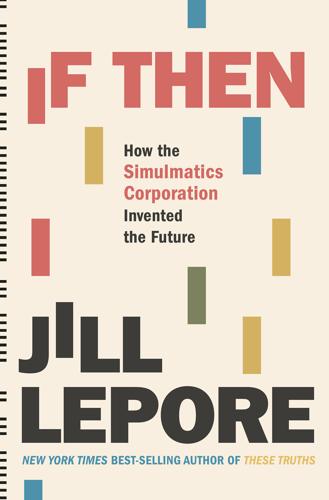
If Then: How Simulmatics Corporation Invented the Future
by
Jill Lepore
Published 14 Sep 2020
“If man is to continue as a successful pattern-complex function in universal evolution,” Fuller wrote in 1960, “it will be because the next decades will have witnessed the artist-scientist’s spontaneous seizure of the prime design responsibility and his successful conversion of the total capability of tool-augmented man from killingry to advanced livingry.” For Stewart Brand, an LSD advocate and one of Ken Kesey’s Merry Pranksters, the commune answered the atomization of Cold War America. But communal living required tools, a taking back of the machine. In 1968, from his base in Menlo Park, California, Brand launched the Whole Earth Catalog, with the motto “access to tools.” (“The insights of Buckminster Fuller are what initiated this catalog,” Brand wrote in its inaugural issue.)40 In 1972, when ARPANET made its debut, Brand celebrated the liberation of the computer from big business.
…
In 1990, the Department of Defense turned ARPANET over to the National Science Foundation’s NSFNET network, which was decommissioned in 1995 when the private sector took it over. Libertarians had made common cause with conservatives, arguing for opening the Internet up to commercial traffic as a libertarian and even anarchist free market utopia, outside of any possible federal government agency or regulation. In 1994 Wired magazine published “The Merry Pranksters Go to Washington.” The New Communalists, in the form of men like Brand, joined forces with the New Right, led by Newt Gingrich. An unregulated Internet would be the least noticed element of Gingrich’s Contract with America.55 “The real legacy of the sixties generation is the computer revolution,” Brand announced in Time magazine.

San Francisco
by
Lonely Planet
But neither jokes nor striptease would pop the last button of conventional morality in San Francisco – no, that was a job for the CIA. In a pronounced lapse in screening judgment, the CIA hired local writer Ken Kesey to test psychoactive drugs intended to create the ultimate soldier. Instead, they unwittingly inspired Kesey to write the novel One Flew Over the Cuckoo’s Nest, drive psychedelic busloads of Merry Pranksters across country, and introduce San Francisco to LSD and the Grateful Dead at the legendary Acid Tests. After the Civil Rights movement anything seemed possible, and for a while it seemed that the freaky force of free thinking would stop the unpopular Vietnam War. At the January 14, 1967 Human Be-In in Golden Gate Park, trip-master Timothy Leary urged a crowd of 20,000 to dream a new American dream and ‘turn on, tune in, drop out.’
…
➡ Hell’s Angels: A Strange and Terrible Saga (Hunter S Thompson) This spare-no-details account of the outlaw Bay Area motorcycle club invented gonzo journalism and scandalized the nation. ➡ The Electric Kool-Aid Acid Test (Tom Wolfe) His florid style seems dated, but Wolfe had extraordinary presence of mind to capture the ’60s with Ken Kesey, the Merry Pranksters, the Grateful Dead and Hell’s Angels. ➡ Martin Eden (Jack London) San Francisco’s first literary star started out as the Prince of the Oyster Pirates, a waterfront bad boy who got by on his wits in this semi-autobiographical account. Best for Comics & Graphic Novels Cartoon Art Museum gift shop (SoMa) Isotope (Hayes Valley) Kinokuniya Books & Stationery (Japantown) Neon Monster (Noe Valley) Green Apple Books (the Richmond) Graphic Novels Ambrose Bierce and Mark Twain set the San Francisco standard for sardonic wit, but recently Bay Area graphic novelists like R Crumb and Daniel Clowes have added a twist to this tradition with finely drawn, deadpan behavioral studies.
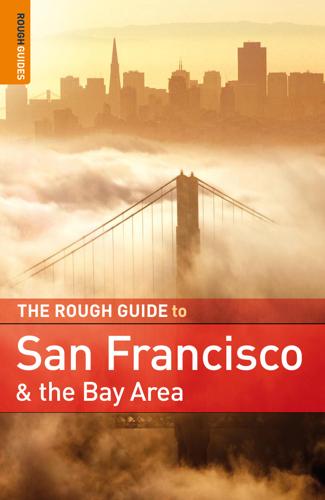
Rough Guide to San Francisco and the Bay Area
by
Nick Edwards
and
Mark Ellwood
Published 2 Jan 2009
Even if experimentation with narcotics was not initially the central tenet of hippie life, it grew in importance as the movement matured, notably the use of LSD or acid. The pivotal event that crystallized many of the traits popularly associated with the hippies came in January 1966, when early LSD guinea pig and Stanford drop-out Ken Kesey and his Merry Pranksters hosted a “Trips Festival” in the Longshoremen’s Hall at Fisherman’s Wharf. The Pranksters handed out flyers asking “Can you pass the acid test?” and the festival was attended by thousands, most on acid. Along with a “Be-In” at Golden Gate Park later the same year, the festival set a precedent for wild living, challenging authority, and dropping out of the social and political establishment.
…
Edmund White States of Desire. Part of a cross-country sojourn that includes a rather superficial account of the gay scene in 1970s San Francisco. Tom Wolfe The Electric KoolAid Acid Test. Wolfe at his most expansive, floridly riding with the Grateful Dead and Hell’s Angels on the magic bus of Ken Kesey and the Merry Pranksters as they travel through the early 1960s, turning California onto LSD. History, politics, and society Nan Alamilla Boyd Wide Open Town: A History of Queer San Francisco to 1965. This gay history is sadly rather heavy going and academic in its analysis; where it shines is in the first person oral histories, scattered throughout the book, which are interviews with everyday gays and lesbians who lived here in the early and midtwentieth century. 406 Walton Bean California: An Interpretive History.
…
H. de Young Museum ................................... 144 Macondray Lane............. 78 Maiden Lane.................... 53 | La Honda....................... 344 Lafayette Park................. 92 Lake Merced................. 148 Lake Merritt................... 293 Lake Temescal............... 299 Land’s End.................... 140 Lawrence Hall of Science ................................... 306 Lawrence Livermore Laboratories............... 321 Legion of Honor......15, 139 Letterman Digital Arts Center........................... 94 Levi’s factory building ................................... 123 Levi’s Plaza...................... 76 Liberty Street................. 122 Light Ship Relief............ 295 Limantour Beach........... 360 Lincoln Park.................. 139 live music mail.................................. 40 Main Post........................ 95 Manson, Charles........... 132 maps................................ 40 Mare Island Naval Shipyard ................................... 318 Marin County....... 346–364 Marin County................ 347 Marin County Civic Center ................................... 362 Marin Headlands........... 351 Marina Green................... 90 Marina, the...................... 90 Marincello...................... 352 Marine Mammal Center ................................... 353 Maritime Museum........... 87 Martinez......................... 319 Martinez Adobe............. 319 Masonic Center............... 80 Maupin, Armistead.......... 76 Mavericks Beach........... 341 Mayacamas................... 375 Mays, Willie................... 273 McClure’s Beach........... 361 McLaren, John.............. 143 media............................... 33 Merry Pranksters, the.... 133 Mexican-American War ................................... 394 Mexican Heritage Plaza ................................... 338 Milk, Harvey................... 125 Mill Valley and Mount Tamalpais Scenic Railroad...................... 357 Mill Valley....................... 357 Mills College.................. 297 Miramar Beach.............. 341 Mission Bay................... 108 Mission Cultural Center ................................... 123 Mission Dolores............. 120 Mission San Francisco Solano de Sonoma..... 380 Mission San Jose de Guadalupe.................. 298 Mission San Rafael Arcangel..................... 362 Mission Santa Clara de Asis............................. 338 Mission Street............... 123 Mission, the.......... 117–124 Mission and the Castro. ................................... 121 Mission, the Castro, and south.................. 118–119 Mitchell Brothers O’Farrell Theater....................... 110 i n de x Jack London State Park ................................... 381 Jackson Square.............. 62 Jackson Square, Financial District and Embarcadero............... 57 James C.
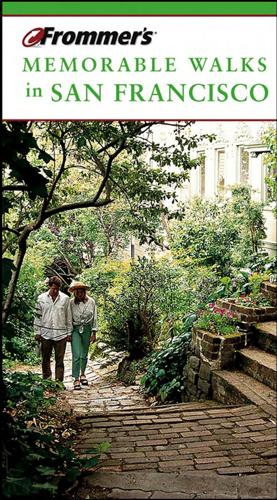
Frommer's Memorable Walks in San Francisco
by
Erika Lenkert
Published 15 Mar 2003
Their free-form improvisation was one of the primary expressions of the hippies’ “do your own thing” principle. Until 1995, you could still experience something of that scene by attending a concert by The Grateful Dead, the quintessential psychedelic rock band. Beneath the tie-dyed shirts and blissful smiles were a set of musical values that dated back to the days of Ken Kesey and his Merry Pranksters, a no-holdsbarred tradition of spontaneous improvisation even at the expense of clarity. The city was deeply saddened in August 1995 by the death of the band’s leader, Jerry Garcia, one of San Francisco’s cultural icons. Jerry played in a number of Bay Area bands before founding the Dead in 1965; but it was with the Dead that he gained real recognition and 13.
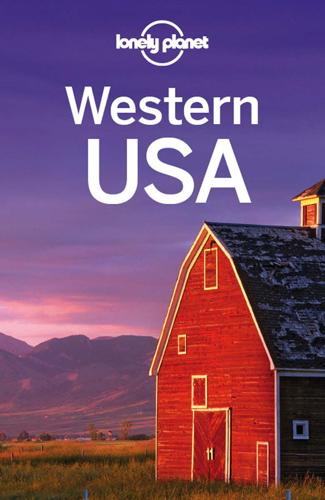
Western USA
by
Lonely Planet
OREGON FACTS »Nickname Beaver State »Population 3,831,074 »Area 95,997 sq miles »Capital city Salem (population 154,637) »Other cities Portland (population 583,776), Eugene (population 156,185), Bend (population 76,639) »Sales tax Oregon has no sales tax »Birthplace of former US president Herbert Hoover (1874–1964), writer and Merry Prankster Ken Kesey (1935–2001), actress and dancer Ginger Rogers (1911–95), The Simpsons creator Matt Groening (b 1954), filmmaker Gus Van Sant (b 1952) »Home of Oregon Shakespeare Festival, tree-sitting, Nike, McMenamins »Politics Democratic governor, Democrat majorities in Congress, Democrat in Presidential elections since 1984 »Famous for the Oregon Trail, forests, rain, beer, not being able to pump your own gas »State beverage milk (dairy’s big here) »Driving distances Portland to Eugene 110 miles, Pendleton to Astoria 295 miles Portland If you want to see what the future looks like, come to Portland, Oregon, a city that is 10 years ahead of its time and as definitive of its age as the Rome of Caesar or the Paris of Haussmann.
…
While the downtown’s no oil painting, Eugene wins kudos for its academic institution, the magnificently landscaped University of Oregon, which also doubles up as an arboretum. Elsewhere Eugene is an underneath-the-surface kind of place where some gentle prodding reveals running trails, workers coops and the odd aging Merry Prankster. The Prankster’s original psychedelic bus, Further, remains at the farm of former Eugene resident Ken Kesey in Pleasant Hill, 10 miles away. Sights & Activities As the city that gave the world Nike, Eugene (or ‘Tracktown’ as it likes to call itself) safeguards some of the best running facilities in the nation.
…
Joan Didion nailed contemporary California culture in Slouching Towards Bethlehem, a collection of essays that takes a caustic look at 1960s flower power and the Haight-Ashbury district. Tom Wolfe also put ’60s San Francisco in perspective with The Electric Kool-Aid Acid Test, which follows Ken Kesey’s band of Merry Pranksters. In the 1970s, Charles Bukowski’s semi-autobiographical novel Post Office captured down-and-out downtown LA, while Richard Vasquez’s Chicano took a dramatic look at LA’s Latino barrio. Hunter S Thompson, who committed suicide in early 2005, wrote Fear and Loathing in Las Vegas, set in the temple of American excess in the desert; it’s the ultimate road-trip novel, in every sense of the word.

Survival of the Richest: Escape Fantasies of the Tech Billionaires
by
Douglas Rushkoff
Published 7 Sep 2022
Tech companies actively sought out programmers from this imaginative subculture, and made special accommodations for them—such as quietly giving certain employees early warning of the drug tests they were required to conduct as defense contractors. Psychedelic heroes of the 1960s, including LSD guru Timothy Leary, former Merry Prankster Stewart Brand, and Grateful Dead lyricist John Barlow, reassured the California counterculture that the computer revolution would be characterized less by the postwar military bureaucracy or even high-tech corporations than by the “new communalists ” of Haight-Ashbury, the Whole Earth Catalog, and the hot tubs of Esalen.
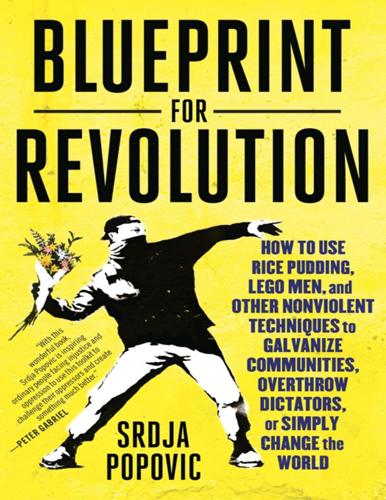
Blueprint for Revolution: How to Use Rice Pudding, Lego Men, and Other Nonviolent Techniques to Galvanize Communities, Overthrow Dictators, or Simply Change the World
by
Srdja Popovic
and
Matthew Miller
Published 3 Feb 2015
What the police didn’t seem to realize was that in this slapstick comedy, the Ping-Pong balls—much like the earlier fountains—were just the props. It was they themselves, the regime’s enforcers, who had been cast to star as the clowns. It was time to up the ante. Like Harvey Milk, the Syrians knew that nothing gets results quite like shit. Thanks to the wonders of technology, the merry pranksters secured a few hundred USB speakers, tiny little sticks that could play a few songs out loud. To these they uploaded popular hymns of the resistance—“Assad Is a Pig” and so on. Then they concealed the miniature speakers in the worst places they could nd: rancid garbage cans, piles of manure, and anywhere else that reeked.
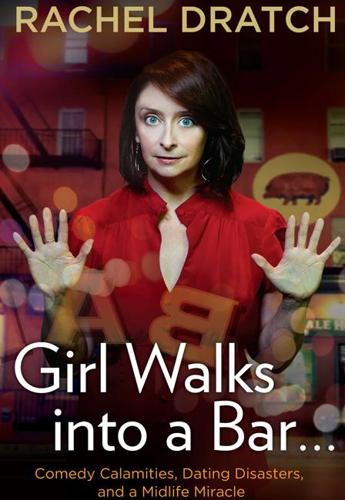
Girl Walks Into a Bar . . .: Comedy Calamities, Dating Disasters, and a Midlife Miracle
by
Rachel Dratch
Published 29 Mar 2012
I can tell you with great certainty that it happened literally quicker than the blink of an eye because before I could blink my eye, that rubber band had smacked my eyeball like a slingshot. OWW! Aghh! Owwww! The irony occurred to me instantly. While still smarting and futilely rubbing my eye, I was thinking in my you-merry-prankster tone, “U-niverse! Why are you doing this to me? All I wanted was a flower and you gave me a whole bunch of flowers. Why you gotta go and wreck it, Universe?” The next morning, I woke up and, to my surprise, my eye still really hurt. Now I had to go to the eye doctor. There goes my whole afternoon.
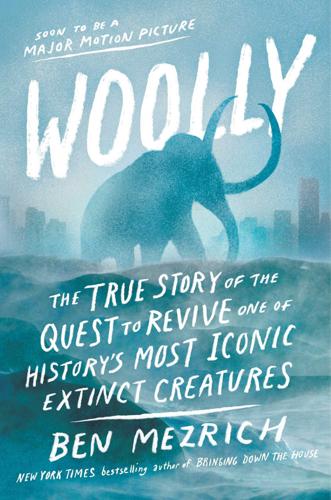
Woolly: The True Story of the Quest to Revive History's Most Iconic Extinct Creature
by
Ben Mezrich
Published 3 Jul 2017
Church could think of no better description of Brand and Phelan. In the late sixties, as the creator and publisher of the Whole Earth Catalogue, Brand had become a guide for those looking to live in harmony with the environment. He had blazed a countercultural trail that had inspired Church’s entire generation. One of Ken Kesey’s original Merry Pranksters, who were written about by Tom Wolfe in his book The Electric Kool-Aid Acid Test, Brand had been a proponent of the use of LSD—the “turn on, tune in, drop out” movement. In fact, the Whole Earth Catalogue had actually grown out of an acid trip. After a particularly lucid experience in 1968, Brand had decided to sell buttons inquiring, “Why haven’t we seen a picture of the whole Earth yet?”
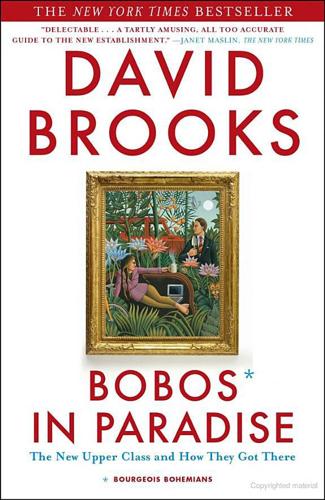
Bobos in Paradise: The New Upper Class and How They Got There
by
David Brooks
Published 1 Jan 2000
Gone is the old emphasis on scientific analysis and narrow specialization. Gone are Robert McNamara–style rationalists with their sharp white shirts. Now messy desks are admired, along with the tousle-haired geniuses who sit behind them. Companies hire hyperkinetic motivators to serve as in-house Ken Keseys and inspirational Merry Pranksters. Gordon MacKenzie is an aging hippie who wears bright tie-dyed shirts and blue jeans and goes from corporation to corporation exhorting them to “orbit the giant hairball.” The hairball in his lexicon is the bureaucracy, and to orbit it is to spin out into an individualized realm of creative vibrancy.
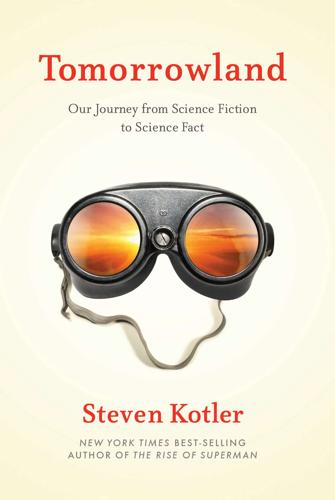
Tomorrowland: Our Journey From Science Fiction to Science Fact
by
Steven Kotler
Published 11 May 2015
Most date the start of that burial to 1960, when Harvard psychologist Timothy Leary traveled to Mexico to try magic mushrooms for the first time, later saying he learned more about the brain “in the five hours after taking these mushrooms . . . than . . . in the preceding fifteen years of doing research in psychology.” Over the next few years, Leary began conducting research on psychedelics, first at Harvard and, after he was thrown out, at an estate on the East Coast. Along the way, he dosed hundreds, maybe thousands, including Ken Kesey and the rest of the Merry Pranksters. The fire that was the sixties had been lit — which is what most remember from this period. But psychedelic research didn’t go away. By the time that party was over — LSD was banned in 1968, psilocybin soon after, though most point to the 1970 Controlled Substance Act (and the resulting exportation of US drug policy to the rest of the world) as the real end — there had been dozens of books written, six major conferences, and more than 1,000 papers published about research conducted on over 40,000 patients.

The End of Big: How the Internet Makes David the New Goliath
by
Nicco Mele
Published 14 Apr 2013
They called their protest Smash ILLIAC IV and included a cartoon of the mainframe computer with screens tracking things like a “kill-die factor” and a gaping mouth labeled “Feed $$$$$$ here!” 12. Stewart Brand is a particularly interesting figure because he bridged these two branches of nerd culture. He was the camera operator at Engelbart’s “Mother of All Demos,” but he was also one of the Merry Pranksters running around on Ken Kesey’s bus. The quotation is taken from his essay “We Owe It All to the Hippies,” Time, 1 Mar. 1995. 13. http://www.digibarn.com/collections/newsletters/peoples-computer/peoples-1972-oct/index.html 14. http://www.atariarchives.org/deli/homebrew_and_how_the_apple.php 15. http://www.digibarn.com/collections/newsletters/homebrew/V2_01/index.html 16. http://www.gadgetspage.com/comps-peripheral/apple-i-computer-ad.html 17.
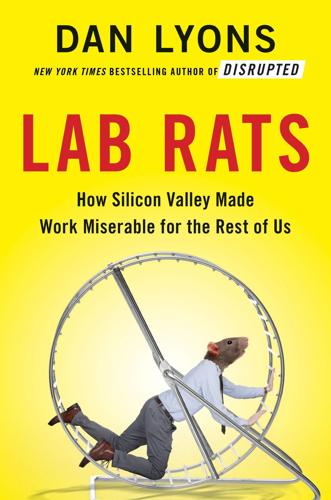
Lab Rats: How Silicon Valley Made Work Miserable for the Rest of Us
by
Dan Lyons
Published 22 Oct 2018
Wozniak and his Apple co-founder Steve Jobs were long-haired hippie-hackers who built their first personal computers as members of the Homebrew Computer Club, a pack of amateur kit-computer hobbyists. Wozniak was steeped in the people-first “HP Way.” Jobs was an LSD-taking, commune-dwelling hippie who often went barefoot and who was influenced by Stewart Brand, a proponent of psychedelic drugs who hung out with Ken Kesey and the Merry Pranksters. Brand created the Whole Earth Catalog and co-founded the WELL, one of the first online communities. Its members included John Perry Barlow, who wrote lyrics for the Grateful Dead and co-founded the Electronic Frontier Foundation, an Internet civil liberties advocacy organization. Counterculture values—freedom, personal liberation, civil rights, respect for the individual—shaped the culture of Silicon Valley.
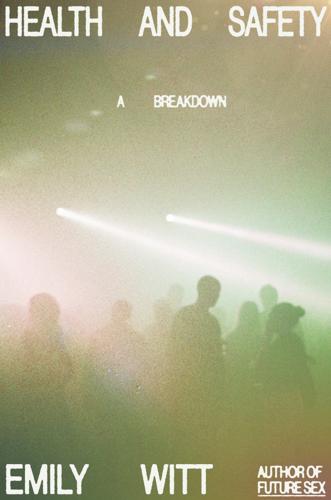
Health and Safety: A Breakdown
by
Emily Witt
Published 16 Sep 2024
I moved away for several years and wasn’t there for it, but the small and somewhat nerdy electronic music scene that reemerged in New York in the mid-to-late 2000s, and was the precursor to Bossa and Sustain, seemed to have taken its cues and its ethics from Berlin as much as from the Black American origins of techno in Detroit, or in the country’s 1990s underground rave scene, or in New York’s own long-suppressed nightclub tradition. The aesthetics of the revival were austere and knowing, almost to the point of churchiness, and to differentiate itself from the major-label EDM of Electric Daisy Carnival or the fur coats and leggings of Burning Man there was an outright aversion to Merry Prankster–ish interpretations of psychedelia. At Sustain I was self-conscious of the Burning Man stickers on my water bottle—this was not a place to express one’s inner hippie. The aftermath of the recession still lingered; there was a simplicity in people’s clothes and a rejection of excess materialism.
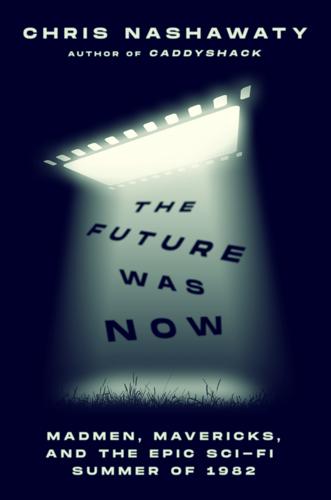
The Future Was Now: Madmen, Mavericks, and the Epic Sci-Fi Summer Of 1982
by
Chris Nashawaty
As Cartwright was blasted in the face with a hose shooting blood, she screamed at the top of her lungs, fell back on a chair, and fainted. Weaver let loose a shriek of raw animal fear. Skerritt threw himself against the wall with his hands covering his mouth, eyes wide in horror. Scott then whispered, “Cut,” smirking like a half-mad merry prankster. Needless to say, his actors weren’t quite as thrilled. “When they finally took us down, the whole set was in a big plastic bag and everybody was wearing rain gear and there were huge buckets around,” recalled Cartwright. “The formaldehyde smell automatically made you queasy. And John was just lying there.
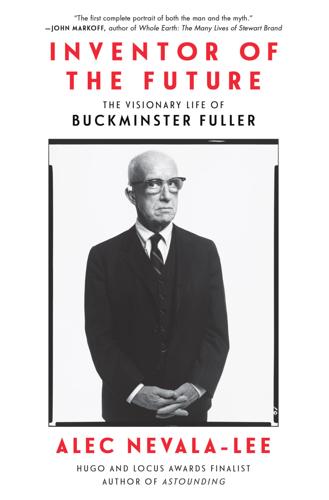
Inventor of the Future: The Visionary Life of Buckminster Fuller
by
Alec Nevala-Lee
Published 1 Aug 2022
From there, he wandered into art circles, including USCO, an experimental collective of poets, filmmakers, and other artists in Garnerville, New York, at which he encountered Fuller’s ideas in depth for the first time. After reading the novel One Flew Over the Cuckoo’s Nest, Brand connected in California with the author Ken Kesey, who dreamed of holding psychedelic events with lights and music in a giant dome. Brand collaborated with Kesey’s Merry Pranksters, a roving band of outsiders devoted to the liberating effects of hallucinogenic drugs, to produce the celebrated Trips Festival in San Francisco in 1966. Although Tom Wolfe dismissed Brand as “an Indian freak” in his chronicle of this period, The Electric Kool-Aid Acid Test, his interests ranged widely, and his first great insight came almost immediately after he saw Fuller speak at San Jose State: I was bored in the spring of 1966, and on my rooftop in North Beach, San Francisco, I took a half a dose—maybe 150 micrograms—of LSD, and just had a nice, long, thoughtful afternoon that was colored by having listened to a fair number of Buckminster Fuller lectures and having read his books over the previous months.
…
See Brokaw, Clare Boothe (later Luce) Luce, Henry, 167, 168, 169, 172, 173, 185–186, 322 Ludin, Mohammed Kabir, 282 Lupu, Aurel, 147 Lusitania, 52 MacBride, Robert, 425 “Machine Tools” (Fuller), 173 Mack, Benjamin, 596n432 Mack Trucks company, 74 Mackinder, Halford, 282 MacLeish, Archibald, 133, 443 Macmillan, 393, 401–402 MacNaughton, Leslie M., 65, 76, 398–399 Macneil, Marie and Robert, 174 Madarasz, George, 7 Mailer, Norman, 577n374 Malisoff, William Marias, 166 Malthus, Thomas, 29, 315 Man, Alrick, H., Jr., 85, 203 man, Fuller’s definition of, 164 Mango, Roberto, 271 Manhattan, dome for, 300, 300fig, 306 Manhattan Project, 191, 248 Manock, Jerry, 5–6 Marchand, Marie “Romany Marie,” 70, 77, 118–119, 120, 123, 129 Marcos, Ferdinand, 413–414 Marcos, Imelda, 413–414 Mardas, Yannis “Magic Alex,” 572n359 Marimekko textiles, 348 marine shelter program, 269–271, 275–276 Markkula, Mike, 2 Marks, Robert W., 134, 140, 304, 311, 391, 461 Marquand, John P., 43, 110 Mars, Roman, 469 Mars Science City, 470 Marshall, Herbert, 364 Marshall Field’s, 115–116 Martinez, Ysidore, 247 Marvel, Lucilla Fuller, 295 Marvel, Tom, 295 Marx, Karl, 475 Masey, Jack, 281–282, 283, 298, 326–327 Mason, Dixie, 60–61 Massachusetts Constitutional Convention, 36 Massachusetts Volunteer Militia, 48 Matrix Structures, 286 Matter, Herbert, 359, 361 Matter, Mercedes, 359, 362 Mayne, Thom, 469 McCamy, James L., 180, 192, 193 McCartney, Paul, 359 McDonnell, Edward, 63, 72–73, 75 McDonough, William, 469 McHale, John, 274, 293, 301, 320, 322, 328, 335, 358 McHale, Magda, 358 McIntosh, Arthur T., 87 McKibben, Bill, 469 McKim, Mead & White, 80 McKim, Robert, 5, 338 McLuhan, Marshall, 321–322, 328, 352, 374, 387, 389, 404, 485n6 McNamara, Robert, 366 Mead, Margaret, 321, 382, 424 Mechanical Wing, 173, 235 Medium Is the Massage, The (McLuhan), 374 Meeker, Arthur, 52, 70–71 Meeks, Everett V., 122 Mehta, Praveena, 540n238 Meller, Gillian, 559n316 Meller, James, 364, 370, 559n316 Melnikov, Konstantin, 299 Menotti, Gian Carlo, 348 Mensa, 398 Mercury space capsule, 320 Merrimac Chemical Company, 46 Merry Pranksters, 351 Metropolitan Life Insurance Company, 125 Meyer, Hans, 381, 389 Meyerson, Martin, 383, 422, 427 Mezes, John, Sr., 520n153 Mezes, Theodore E., 520n153 Michigan lecture, 253–254 Mid-America Jubilee, 280 Mies van der Rohe, Ludwig, 234, 244, 305, 332 Milan Triennale, 271–272, 272fig, 283 Miller, Alvin, 286, 309 Miller, Christian William, 212–213 Miller, Donald C., 203, 205 Miller, Henry, 577n374 Miller, Marilyn, 44 Miller, Osborn Maitland, 185 Millett, Kate, 387 Milton Academy, 25, 31–32, 34 Milunić, Vlado, 469 Minnesota Experimental City, 340, 379 Minni-Earth, 272, 280 Mintz, Ann, 443 Miss Expanding Universe (Noguchi), 133 Missouri Botanical Garden, 295 Mister God, This Is Anna, 447 Mitchell, George P., 469–470 mobile inventory control, 200 Moehlman, John, 249 Moholy-Nagy, László, 163, 220, 244, 540n22 monohex dome, 317 425 Monsanto Chemical Company, 313 Montreal Biosphere, 410, 471.
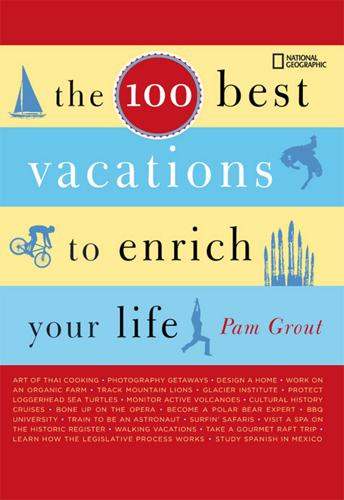
The 100 Best Vacations to Enrich Your Life
by
Pam Grout
Published 14 May 2007
But, while doing a comedy show for B. B. King in 1969, it was the King of Blues himself who bequeathed Wavy the nickname he still uses today. Tom Wolfe: Wavy provided the name for Wolfe’s first novel, The Electric Kool-Aid Acid Test, about the psychedelic sixties. While traveling with Ken Kesey’s Merry Pranksters, Wavy started calling LSD “electric kool-aid,” and Wolfe, who was also traveling with the Pranksters, figured it was the perfect name for his book. Everyone at Woodstock: It was Wavy who got up on the Woodstock stage in 1969 and famously announced: “What we have in mind is breakfast in bed for 400,000
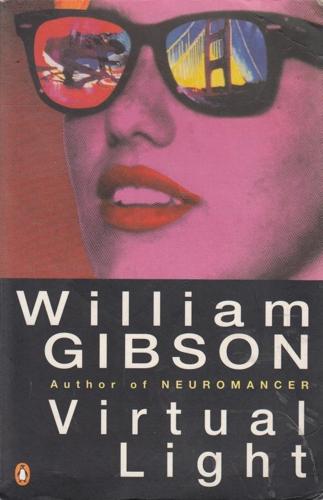
Virtual Light
by
William Gibson
Published 1 Jan 1993
But there were other crimes you could still call computer crimes in the old sense, because they usually involved professional criminals, and these criminals still thought of themselves as hackers. The public, the Fed had told them, still tended to think of hackers as some kind of romantic bullshit thing, sort of like kids moving the outhouse. Merry pranksters. In the old days, he said, lots of people still didn't know there was an outhouse there to be moved, not until they wound up in the shit. Rydell's class laughed dutifully. But not today, the Fed said; your modern hacker was about as romantic as a hit man from some ice posse or an enforcer with a dancer combine.
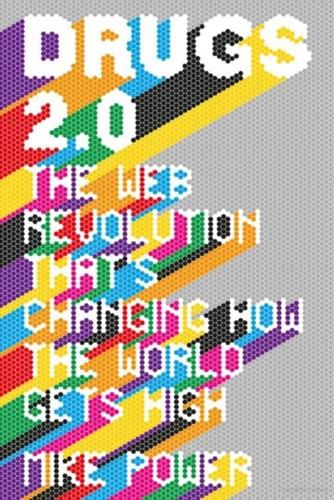
Drugs 2.0: The Web Revolution That's Changing How the World Gets High
by
Mike Power
Published 1 May 2013
It now reads much like a printed blog; it was a paper website, in the words of blogger and author Kevin Kelly, that was sprinting before the web even took its first shaky steps.3 Its statement of intent in its launch issue reads like a manifesto that has been realized by today’s web users: ‘A realm of intimate personal power is developing – the power of the individual to conduct his own education, find his own inspiration, shape his own environment, and share his adventure with whoever is interested. Tools that aid this process are sought and promoted by the Whole Earth Catalog.’ Brand, whose collaborations with Ken Kesey’s Merry Pranksters would evolve into the Acid Tests, the 1960s proto-raves fuelled by LSD and documented by Tom Wolfe in The Electric Kool-Aid Acid Test, felt that information technology was the next stage in humans’ evolutionary progress. Info-anarchists and cyber-utopians not only laid the foundations for the internet, but would act as outriders for the free software movement.

Maphead: Charting the Wide, Weird World of Geography Wonks
by
Ken Jennings
Published 19 Sep 2011
You could use it to interact with elaborate 3-D models that aren’t really there, which would be a boon to architects visualizing buildings and surgeons trying to practice a tricky triple bypass without killing anyone. If you were so inclined, you could even use AR to turn the world into your own surreal wonderland, changing the color of the sky every thirty seconds or putting a werewolf mask or Groucho glasses on the face of every passerby, like a Merry Pranksters app for an audience of one. But most day-to-day uses of the technology will probably be locational, and that makes me wonder: can this kind of in-world navigation even be called a map? It is a pictorial way to represent geography, I suppose, but one without any significant abstraction: the map is nothing but the territory itself with very good footnotes, a 3-D version of the Sylvie and Bruno map.

The Rapture of the Nerds
by
Cory Doctorow
and
Charles Stross
Published 3 Sep 2012
* * * Huw settles himself among the soup of heated glass beads and bacteria and tries not to think of a trillion microorganisms gnawing away at his dried skin and sweat. He mutters transhuman curses in groaning harmony at the battered teapot—no longer hosting the avatar of a particularly annoying iffrit, but evidently hacked by Ade and his international cadre of merry pranksters. “Why South Carolina? G’wan, you. Why there, of all places?” He isn’t expecting a reply, but the teapot crackles for a moment; then a translucent holo of Ade appears in the air above it, wearing a belly dancer’s outfit and a sheepish expression. “Yer wot? Ah, sorry mate. Feckin’ trade union iffrit’s trying to make an alpha buffer attack on my sprites.”

Cataloging the World: Paul Otlet and the Birth of the Information Age
by
Alex Wright
Published 6 Jun 2014
Also in attendance were a few key members of the original NLS team, who migrated over to Xerox’s PARC research division under the direction of Alan Kay, with whom they began developing the first true personal computer, the Alto. Stewart Brand, who was of course there, later brought the novelist and ur–Merry Prankster Ken Kesey over to look at the system; Kesey promptly dubbed it “the next thing after acid.”16 By the early 1970s, a “People’s Computer Center” had appeared in Menlo Park, providing access to rudimentary computer tools that would allow customers to play games or learn to program. In the mid-1970s a young Steve Jobs (another LSD experimenter) first caught a glimpse of the graphical user interface (GUI) at Xerox PARC, soon licensing the software that would shape the subsequent trajectory of the Macintosh operating system and influence the design of the personal computer operating systems that most of us still use. 260 T he I ntergalactic N etwor k The counterculture of the 1960s and 1970s would play a formative role in shaping the personal computer revolution that followed.

How Not to Network a Nation: The Uneasy History of the Soviet Internet (Information Policy)
by
Benjamin Peters
Published 2 Jun 2016
In 1968, a season ripe with revolt, a symposium of cybertonians published an irreverent report on the “complex cybernetic aspects of humor” that was issued from “Cyber City” in April 1969. The report contains nothing explicitly subversive but overflows with technocratic wit and sarcasm directed against Soviet authority figures. These merry pranksters compared the task of securing living quarters (a notorious challenge of everyday Soviet life) to hyperdimensional geometry and published “formal” reports on “theory of Graphs/Counts” (teoriya grafov, the royal title of count is a homophone with the word graph in Russian), a Jonathan Swift–like account of laughter at work as an underutilized national economic resource, odes to the virtues of Georgian soccer, cheese, beer, and a few chauvinistic laughs about the prospects of the feminization of science.

The Constitution of Knowledge: A Defense of Truth
by
Jonathan Rauch
Published 21 Jun 2021
He portrayed the practice as a form of social satire, sending up the “grievance brigade,” as he called it. “I delight in offending people,” he said in an interview with the U.K.’s Channel 4 News, “to make people think and perhaps to make people laugh.” Were the trolls nihilistic vandals, eager to wreck reputations and lives, or merely merry pranksters out for lulz (internet slang for “laughs”)? You could never be sure. “This is the essence of trolling,” wrote Yiannopoulos: “keeping everyone else guessing as to whether you’re really serious.” The trolls, however, knew what they were doing, and they were not just kidding around. In 2017 the Huffington Post unearthed a style manual for The Daily Stormer, a white supremacist website.5 The guide advised using “naughty humor” to draw in curious readers, and then hammering them with a few repeated points “over and over and over and over again.”
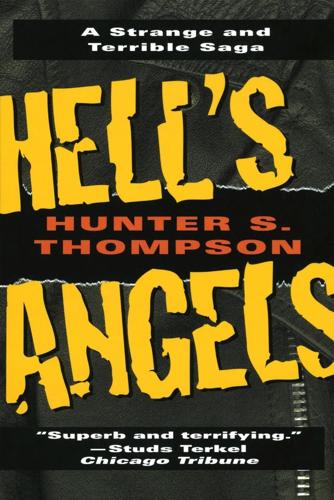
Hell's Angels: A Strange and Terrible Saga
by
Hunter S. Thompson
Published 1 Jan 1966
He and his band of Pranksters had about six acres, with a deep creek between the house and the highway, and a general, overcrowded madness in the private sector. As it happened, nine marijuana charges against the Kesey menagerie were dropped on Friday; this was duly noted in the Saturday papers, which appeared in La Honda just about the time Kesey was posting a sign on his gate saying: THE MERRY PRANKSTERS WELCOME THE HELL’S ANGELS. The sign, in red, white and blue, was fifteen feet long and three feet high. It had a bad effect on the neighbors. When I got there, in the middle of the afternoon, five San Mateo County sheriffs’ cars were parked on the highway in front of Kesey’s property. About ten Angels had already arrived and were safely inside the gate; twenty others were said to be en route.

They All Came to Barneys: A Personal History of the World's Greatest Store
by
Gene Pressman
Published 2 Sep 2025
Part of the rebellion of the day was a rebellion against the rules—if previous generations wanted us to get out and make something of ourselves, we were determined to turn on, tune in, drop out. By 1968, everything had started to get pretty trippy. LSD got popular on the West Coast, and like so much else, caravanned across the country. Its prophets were Timothy Leary and Ken Kesey, the guru and the Merry Prankster. Its theme song was “White Rabbit,” which Grace Slick wrote after tripping, and its ambassadors were the Grateful Dead. (When I saw them play in the early ’70s, they were so zonked, and noodled through their tunes for so long, that I ended up coming down before they finished.) With acid, you had to know what you were getting—you couldn’t afford a bad trip, you might not come back from it.

Radicals Chasing Utopia: Inside the Rogue Movements Trying to Change the World
by
Jamie Bartlett
Published 12 Jun 2017
He tried (and failed) to set up a psychedelic summer camp in Mexico, and in 1966 founded the League for Spiritual Discovery, to ‘change and elevate the consciousness of every American within the next few years’. Ginsberg’s and Leary’s ideas were taking root in fertile soil. Psychedelics were fast becoming the drug of choice for the counterculture movements sweeping America at the time. The Beatles, Bob Dylan, Ken Kesey and the Merry Pranksters, Jack Kerouac, the Doors (named after Huxley’s book) were all getting high, and writing and singing about it. Civil rights activists were getting high. Anti-Vietnam protesters were getting high. Conservative America didn’t like it. In 1966 California became the first state to outlaw psychedelics, at which point Leary gave up any remaining academic pretences and gave his famous ‘Turn on, tune in, drop out’ speech, urging people to join the ‘psychedelic revolution’.* Thousands of Americans followed the advice, but they weren’t taking drugs in a careful clinical setting accompanied by seasoned guides: they were dropping tabs at parties and festivals.

Pegasus: How a Spy in Your Pocket Threatens the End of Privacy, Dignity, and Democracy
by
Laurent Richard
and
Sandrine Rigaud
Published 17 Jan 2023
For Donncha, this was just a little good, clean fun; he could participate in online sit-ins and protests or launch spitballs at the high and mighty, all from the safety of his own home, inside the Ring. There was something unreal about it, and a sense that nobody was really watching. His teenage “hacktivism” wasn’t serious, but it was undoubtedly political. He was a merry prankster who found it amusing to mess with people who lorded over others. His chosen user name alias, a hacker must, was “Palladium,” which is both a chemical element (atomic number 46) often used as catalyst—Donncha had just been accepted into the medicinal chemistry program at Trinity College Dublin—and a religious icon or relic with protective powers.
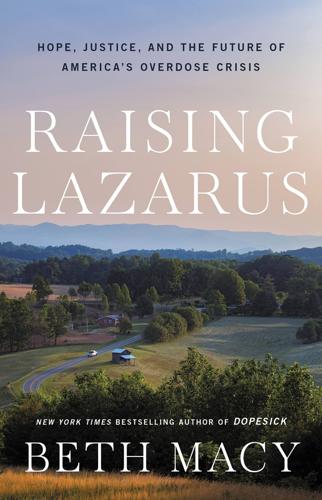
Raising Lazarus: Hope, Justice, and the Future of America’s Overdose Crisis
by
Beth Macy
Published 15 Aug 2022
Ed Bisch, an IT worker in New Jersey, works doggedly to hold the Sacklers accountable on behalf of the more than 1 million Americans dead of overdose since OxyContin launched in 1996. The first time he heard the word OxyContin, his 18-year-old son was dead from it. Mike Quinn, the pro bono lawyer for the Ad Hoc Committee on Accountability, was the only attorney in the case who wasn’t billing some $1,800 an hour. He saw himself as a kind of merry prankster, jabbing the Sacklers and the bankruptcy judge repeatedly. Harm reductionist Alexis Pleus (with Nan Goldin in background) leads an annual Trail of Truth protest and die-in in her home city of Binghamton, N.Y. Surry County, N.C., opioid response director Mark Willis, a former Marine and DEA agent, charts his progress on a wall-spanning whiteboard as he tries to shift his community’s Overton Window of thinking about addiction treatment in his conservative, addiction-plagued region.
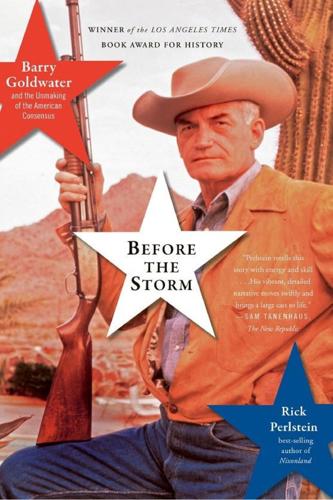
Before the Storm: Barry Goldwater and the Unmaking of the American Consensus
by
Rick Perlstein
Published 17 Mar 2009
Across town, at the intersection of Haight and Ashbury Streets, a new kind of bohemia was taking shape, although many of its most flamboyant representatives were occupied with a cross-country trip on a bus called “Further,” whose riotous exterior decoration included a sign reading “A VOTE FOR BARRY is A VOTE FOR FUN!” A stop along the way was the commune of former Harvard professor Timothy Leary, whose The Psychedelic Experience had come out that year. These were Ken Kesey’s “Merry Pranksters,” later to be immortalized as the first hippies in a book by New York Herald Tribune writer Tom Wolfe. The delegates, mostly gray old factory owners and club women—the butt of cabbies’ jokes that San Francisco banks were running out of nickels and dimes—would have been altogether disgusted by the goings-on at the Haight, were they aware of them; but the folks who would fill the Cow’s spectator galleries—the YAFers and Young Republicans—might have been amused.
…
Buckley: Gregory Schneider, Cadres for Conservatism: Young Americans for Freedom and the Rise of the Contemporary Right (New York: NYU Press, 1999), 81-82; and WP, July 12, 1964. Eisenhower: CBS News special, MTR, T78:0I43. Scranton and BMG followed by chants: AHFCP, vol. I, picture 14. 372 For “Merry Pranksters,” see Tom Wolfe, The Electric Kool-Aid Acid Test (New York: Farrar, Straus and Giroux, 1968). For North Beach and “Eisenhower Sway,” see William J. Miller, Henry Cabot Lodge: A Biography (New York: Heineman, 1967), 368; and WP, July 12, 1964. Dick Gregory: author interview with Jameson Campaigne Jr.; and Newsweek, July 20, 1964. 372 For Der Spiegel, see WSJ.
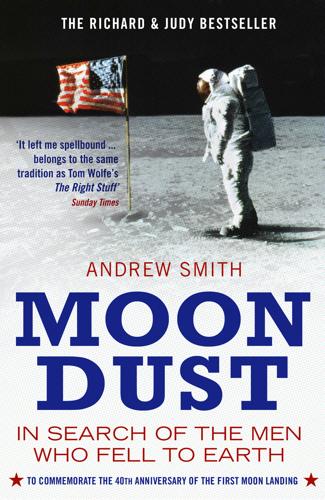
Moondust: In Search of the Men Who Fell to Earth
by
Andrew Smith
Published 3 Apr 2006
And although the space programme was begat by the Cold War, the lunar landings still looked like such a crazy Sixties thing, a last waltz with optimism in a decade which arguably ended on December 19, 1972, when the Apollo 17 astronauts sailed home knowing that the adventure was over and its promise had been a mirage. No Merry Prankster or acid-popping mystic ever did anything freakier than this, and yet the ambiguities of the enterprise seemed endless. What had humanity gained from President Kennedy’s capricious decision to launch his nation at the Moon, and the outrageous cash it required? The lunar programme cost twenty-four billion 1960s dollars: at its peak, NASA was swallowing 5 per cent of the U.S. federal budget.
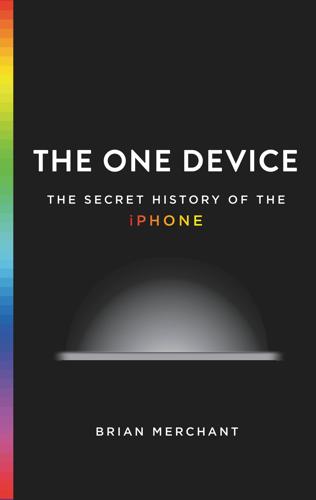
The One Device: The Secret History of the iPhone
by
Brian Merchant
Published 19 Jun 2017
Of course, he wasn’t necessarily the first—one of his peers, the Canadian academic Hugh Le Caine, made capacitive-touch sensors. (Recall, that’s the more complex kind of touchscreen that works by sensing when a human finger creates a change in capacitance.) Then there was Don Buchla, the Berkeley techno-hippie who wired Ken Kesey’s bus for the Merry Prankster expeditions and who was also a synth innovator, but he’d make an instrument only for those he deemed worthy. They all pioneered capacitive-touch technology, as did Buxton, in their aural experiments. The first device that we would recognize as a touchscreen today is believed to have been invented by Eric Arthur Johnson, an engineer at England’s Royal Radar Establishment, in 1965.

Pirate Cinema
by
Cory Doctorow
Published 2 Oct 2012
Dog was better about talking these days, sure, but when you were cruel to him, he went right back into his own head and pulled the door shut behind him. Jem glared at me. It seemed they were all furious with me. I recognized the paranoid, angry feeling for what it was: massive sleep deprivation and caffeine overdose. Time to go to bed. I woke fourteen hours later, feeling like weights had been tied to my arms and legs by a merry prankster who finished the job by gluing my eyes shut with wheatpaste and then taking a foul, runny shit in my mouth. Yes, I know that this is a gratuitously disgusting way of describing it. Take comfort, dear reader, in the knowledge that it is not one half so disgusting as the taste in my mouth. I staggered to the second floor toilet and turned the tap on all the way.
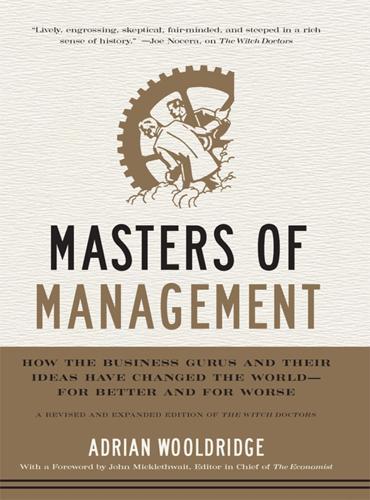
Masters of Management: How the Business Gurus and Their Ideas Have Changed the World—for Better and for Worse
by
Adrian Wooldridge
Published 29 Nov 2011
One training center looks like a Disneyland version of Washington’s Capitol, and the multiplex resembles a giant glass golf ball. The Taj Mahal meeting room sits next to the John Pierpont Morgan lecture hall. To a visiting Westerner this is all rather hallucinatory: you half expect to meet Ken Kesey and his Merry Pranksters. To young Indians on the way up, it proclaims that the world is their oyster. No wonder most Infosysians like to bring their extended families to tour the campus. Infosys grasped from the start that to challenge global companies such as IBM it would have to attract India’s brightest. In 1993, it decided to go public, even though it did not need the cash, in large part in order to be able to build a campus that could rival anything America could offer.
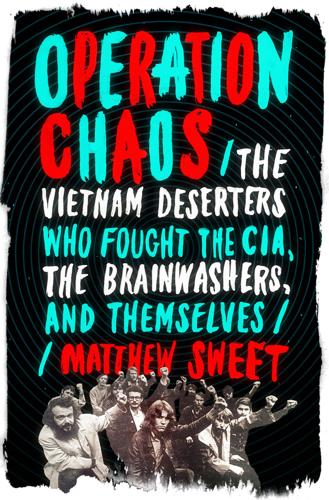
Operation Chaos: The Vietnam Deserters Who Fought the CIA, the Brainwashers, and Themselves
by
Matthew Sweet
Published 13 Feb 2018
The first time I heard its name, I thought the ADC sounded rather innocuous. I imagined a room of sober young men passing resolutions against the military-industrial complex. Now I think of it as a phenomenon of a different order. Something through which we might read the times, like the psychedelic bus trip undertaken by Ken Kesey and the Merry Pranksters; or the Stanford Prison Experiment, inside which the psychologist Philip Zimbardo barricaded a group of impressionable boys and watched them sink into barbarism. To describe the experiences of all those whose lives were touched by the committee would require more than a book. It would require an immense illuminated map of the world, and an army of uniformed croupiers pushing stacks of color-coded tokens in the direction of Sweden.
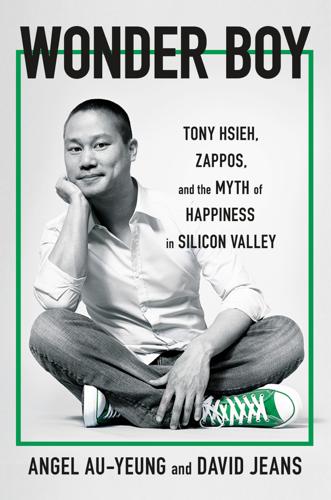
Wonder Boy: Tony Hsieh, Zappos, and the Myth of Happiness in Silicon Valley
by
Angel Au-Yeung
and
David Jeans
Published 25 Apr 2023
Most students picked a series of photographs that represented the highlights of their eighteen or so years of life, such as photos of themselves as kids, shots of their pets, or pictures with friends at parties or pep rallies. Tony’s, however, was filled with mysterious-looking doodles, drawings, quotes, and inside jokes. It looked more like an invitation to an Acid Test party from the Merry Pranksters than a yearbook page. “It was very unusual,” said David. Tony wrote out his Chinese name in bold. There were references to fictional characters, including Indiana Jones and Angus “Mac” MacGyver, the dashing American TV hero who eschewed violence and instead used unconventional methods to solve conflicts and problems.
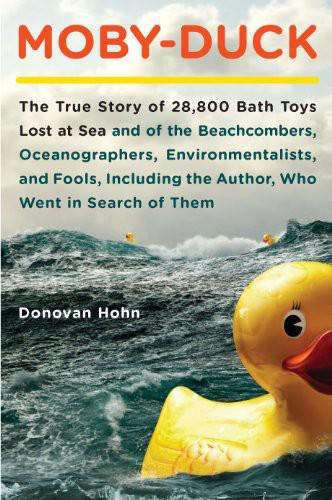
Moby-Duck: The True Story of 28,800 Bath Toys Lost at Sea and of the Beachcombers, Oceanographers, Environmentalists, and Fools, Including the Author, Who Went in Search of Them
by
Donovan Hohn
Published 1 Jan 2010
What you won’t see, except in news stories about her, is the Eagle Lady or her shack. You might see the bespattered branches of her dead tree, but if so the photo will be cropped, leading the viewer to imagine an old-growth forest. You won’t see the campers and their colorful tents, or the hand-painted school bus inhabited by latter-day merry pranksters, or the aluminum fishing boat up on cinder blocks in Brad Faulkner’s yard, or the muddy cars and trucks in the campground parking lot, or the waterfront condominiums. Or the flock of bald eagles scrambling after fish scraps like pigeons after crumbs. 14 By then I’d received from Pallister the following e-mail:Hi Donovan, You won’t believe this . . .
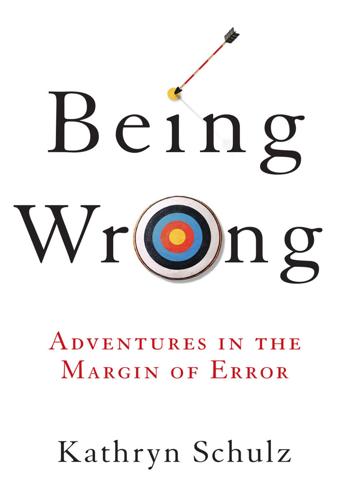
Being Wrong: Adventures in the Margin of Error
by
Kathryn Schulz
Published 7 Jun 2010
Virtually every culture in every era has believed that dreams express otherwise inaccessible truths about the dreamer: about her forgotten or unknown past, her secret beliefs and desires, her destiny. In the same vein, virtually every culture in every era (with the halfway exception of the industrialized West) has regarded visions and hallucinations as revealing the otherwise inaccessible truths of the universe. From Siberian shamans to Aztec priests to the Merry Pranksters to spiritually inclined potheads the world over (ancient Christians, early Jews, Scythians, Sikhs, Sufis, and Rastafarians, to name just a few), we have regarded our drugs as entheogens—substances that can lay bare the truth of the cosmos and show us the face of God. If dreams and drug states create acute but temporary alterations in our understanding of reality, the acute and ongoing version is insanity.
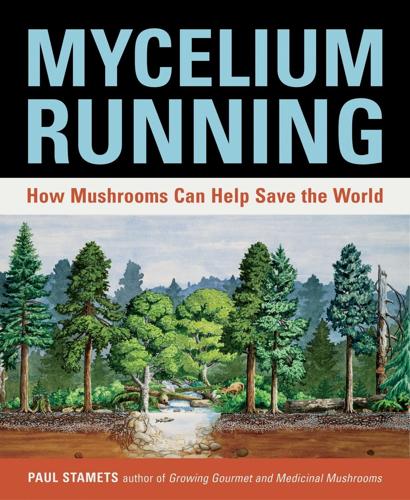
Mycelium Running: How Mushrooms Can Help Save the World
by
Paul Stamets
Published 14 Apr 2005
Spores have the advantage of quantity—many millions of points of inoculation. Their disadvantage is their fickleness—sometimes they work well, and other times not, depending on the species and the substrate. There are other ways of using spores. FIGURE 130 One of these spored oils was made especially for Ken Kesey and the Merry Pranksters and contains hundreds of millions of spores of Psilocybe azurescens. See also figure 77, showing a mycelial colony emanating from point of contact with spored oil. Spores in Oils Spores can be immersed in canola, corn, or safflower oil, which can be used as a lubricant for chain saws or other cutting equipment.
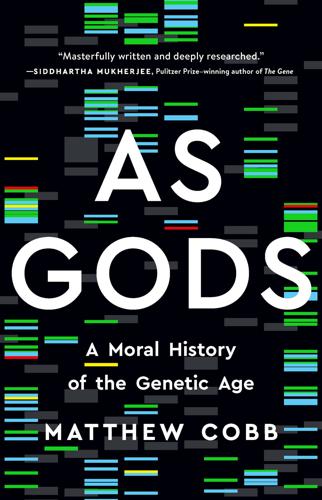
As Gods: A Moral History of the Genetic Age
by
Matthew Cobb
Published 15 Nov 2022
The subsequent decline happened at exactly the same time as the three threatening areas of genetic engineering that impelled me to write this book – heritable human genetic engineering, gene drives and gain-of-function research on dangerous pathogens – were emerging. We seem to have dropped our guard. Footnotes i Brand appears in the opening paragraphs of another iconic late-1960s book, Tom Wolfe’s The Electric Kool-Aid Acid Test (1968). Brand was one of Ken Kesey’s band of Merry Pranksters. ii Among the investors were the billionaire executive producer of Jurassic World and the celebrity Paris Hilton. That might sound a lot of money but given the scale of what is being attempted it is peanuts. Being a mammoth involved so much more than simply resisting cold – all the foraging behaviours, responses to the smell of food deep beneath the snow, and so on, would also have to be in place.
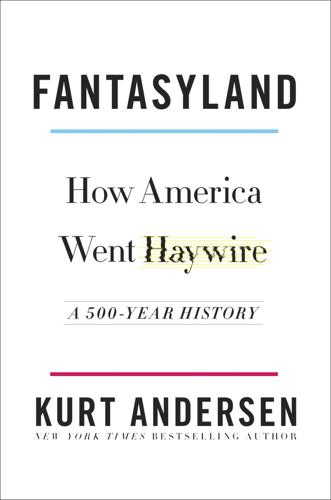
Fantasyland: How America Went Haywire: A 500-Year History
by
Kurt Andersen
Published 4 Sep 2017
For many people, drugs’ fantasy-encouraging effects extend beyond the minutes or hours of being high, leaching into everyday thought, not always usefully. — THE GREAT CONTEMPORANEOUS firsthand account of this 1960s, I think, is The Electric Kool-Aid Acid Test, Tom Wolfe’s book about Kesey and his acid-dropping Merry Prankster adventures. Eight years later, in the mid-1970s, as the Big Bang of subjectivity and hedonism blasted its new elements and energies through the American universe, Wolfe memorialized the larger transformation. He wrote an essay in New York magazine that’s remembered today for coining a term, the Me Decade, still used as a catchphrase for the touchy-feely narcissism of the 1970s’ newfangled self-improvement schemes.
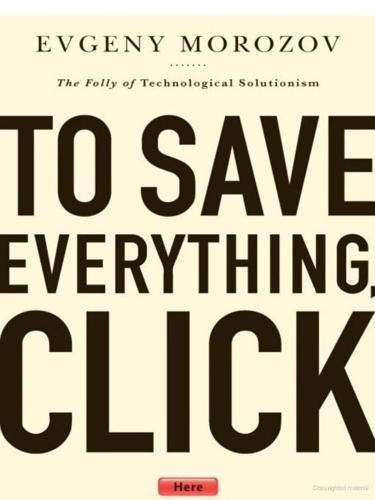
To Save Everything, Click Here: The Folly of Technological Solutionism
by
Evgeny Morozov
Published 15 Nov 2013
Norton & Company, 2001). 123 “‘Defending American interests’ is an ambiguous idea”: ibid., 158. 123 “legislators can satisfy demands to ‘do something’”: ibid., 158–159. 123 “Ambiguity facilitates negotiation and compromise”: ibid., 159. 124 “organized political parties won’t be needed”: Josh Quittner, “The Merry Pranksters Go to Washington,” Wired USA 2 (1994), http://www.wired.com/wired/archive/2.06/eff_pr.html. 124 “The Net is merely a means”: ibid. 124 “instead of re-engineering the Internet”: Heather Brooke, The Revolution Will Be Digitised (New York: Windmill Books, 2012), 230. 125 “if institutions don’t work”: Beth Simone Noveck, Wiki Government: How Technology Can Make Government Better, Democracy Stronger, and Citizens More Powerful (Washington, DC: Brookings Institution Press, 2009), 44. 125 “democratic theory and the design”: ibid., 16. 125 “Newly capable groups are assembling”: Clay Shirky, Here Comes Everybody: The Power of Organizing without Organizations (New York: Penguin, 2009), 24. 126 “there was no way the State Department”: Clay Shirky, “Richard S.
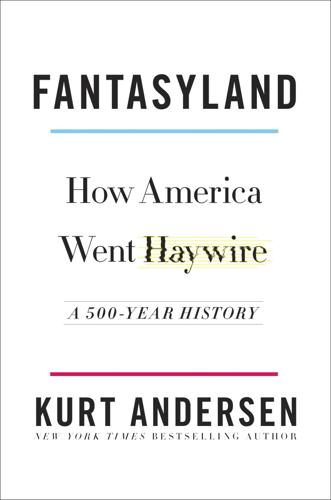
Fantasyland
by
Kurt Andersen
Published 5 Sep 2017
For many people, drugs’ fantasy-encouraging effects extend beyond the minutes or hours of being high, leaching into everyday thought, not always usefully. — THE GREAT CONTEMPORANEOUS firsthand account of this 1960s, I think, is The Electric Kool-Aid Acid Test, Tom Wolfe’s book about Kesey and his acid-dropping Merry Prankster adventures. Eight years later, in the mid-1970s, as the Big Bang of subjectivity and hedonism blasted its new elements and energies through the American universe, Wolfe memorialized the larger transformation. He wrote an essay in New York magazine that’s remembered today for coining a term, the Me Decade, still used as a catchphrase for the touchy-feely narcissism of the 1970s’ newfangled self-improvement schemes.
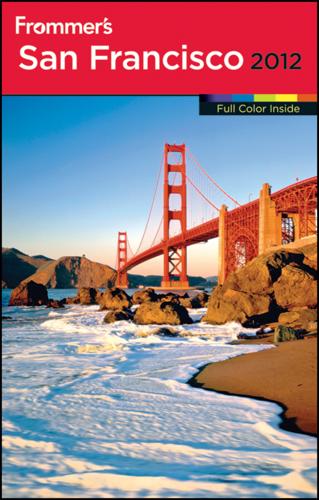
Frommer's San Francisco 2012
by
Matthew Poole
,
Erika Lenkert
and
Kristin Luna
Published 4 Oct 2011
Strange,” was given at the Longshoreman’s Hall in fall 1965, featuring Jefferson Airplane, the Marbles, the Great Society, and the Charlatans. At this event, the first major happening of the 1960s, Ginsberg led a snake dance through the crowd. In January 1966, the 3-day Trips Festival, organized by rock promoter Bill Graham, was also held at the Longshoreman’s Hall. The climax came with Ken Kesey and the Merry Pranksters Acid Test show, which used five movie screens, psychedelic visions, and the sounds of the Grateful Dead and Big Brother and the Holding Company. The “be-in” followed in the summer of 1966 at the polo grounds in Golden Gate Park, when an estimated 20,000 heard Jefferson Airplane perform and Ginsberg chant, while the Hell’s Angels acted as unofficial police.
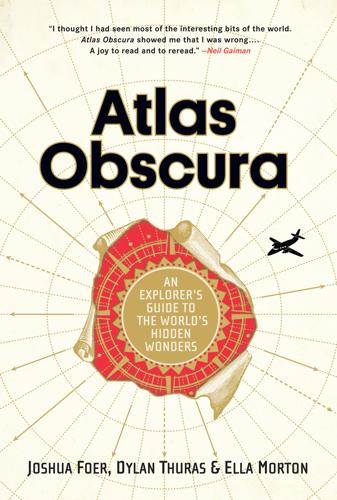
Atlas Obscura: An Explorer's Guide to the World's Hidden Wonders
by
Joshua Foer
,
Dylan Thuras
and
Ella Morton
Published 19 Sep 2016
The art collective grew from an old shipping container in 2006, and centers on an inhabitable, ever-growing artwork made entirely from salvaged materials. Among them are a giant mammoth made from blown-out car tires, a television graveyard, and a swing set made from the rusted skeletons of old car seats. According to its custodians, East Jesus is “populated by an ever-rotating cast of artists, builders, writers, musicians, freethinkers, merry pranksters, wandering messiahs, the dispossessed, the damned.” East Beal Road, Niland. Drive toward Niland on Highway 111, turn east on the street by United Grocery. Travel for 3.5 miles (5.6 km). Salvation Mountain marks the entrance. 33.258889 115.466389 Mismatched couches await an audience at The Range’s weekly talent show.
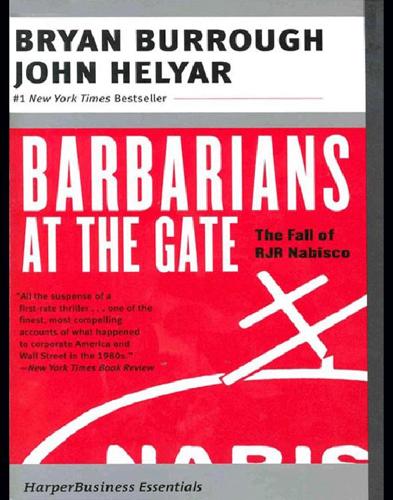
Barbarians at the Gate: The Fall of RJR Nabisco
by
Bryan Burrough
and
John Helyar
Published 1 Jan 1990
“Now all of a sudden we’re stupid assholes.” Ross Johnson sat in his apartment across Grand Army Plaza from Kravis’s office and tried to make sense of the morning’s events. Gone was the brave front erected for Kravis and Gleacher. In its place was a face few of Johnson’s friends had ever seen: The Merry Prankster with vertigo. “As far as I’m concerned,” Johnson told John Martin, “this is all over.” Chapter 9 Theodore J. Forstmann slipped into his white terry cloth bathrobe and padded down the gently curving staircase to breakfast. Bright shards of morning light streamed through the windows of his duplex apartment high above the East River.
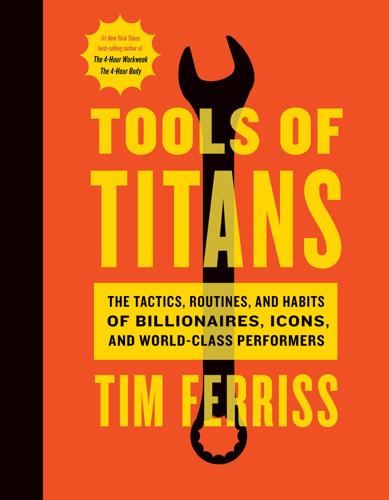
Tools of Titans: The Tactics, Routines, and Habits of Billionaires, Icons, and World-Class Performers
by
Timothy Ferriss
Published 6 Dec 2016
He had tremendous leadership quality in bringing people together. And again, he gave the ring back and went back to farming.” * * * Derek Sivers Derek Sivers (TW/FB: @sivers, sivers.org) is one of my favorite humans, and I often call him for advice. Think of him as a philosopher-king programmer, master teacher, and merry prankster. Originally a professional musician and circus clown (he did the latter to counterbalance being introverted), Derek created CD Baby in 1998. It became the largest seller of independent music online, with $100 million in sales for 150,000 musicians. In 2008, Derek sold CD Baby for $22 million, giving the proceeds to a charitable trust for music education.

Coastal California
by
Lonely Planet
Few writers nail California culture as well as Joan Didion. She’s best known for her collection of essays, Slouching Towards Bethlehem, which takes a caustic look at 1960s flower power and Haight-Ashbury. Tom Wolfe also put ’60s San Francisco in perspective with The Electric Kool-Aid Acid Test, which follows Ken Kesey’s band of Merry Pranksters, who began their acid-laced ‘magic bus’ journey near Santa Cruz. By that time, the Beat generation of writers had already fired up San Francisco’s North Beach literary scene beginning in the 1950s, including with Allen Ginsberg’s epic poem Howl and Jack Kerouac’s iconic novel On the Road. In the early 1970s, Charles Bukowski’s semiautobiographical novel Post Office captured down-and-out downtown LA, while Richard Vasquez’s Chicano took a look at the Latino barrio.

Palo Alto: A History of California, Capitalism, and the World
by
Malcolm Harris
Published 14 Feb 2023
Only in the context of global decolonization can we understand how California became a worldwide revolutionary touchstone in the 1960s. The story we usually get about the West Coast in the ’60s centers on the Free Speech Movement fighting for the right to speak out of turn about the war or whatever—the Summer of Love, hippies, LSD, the Merry Pranksters, the Grateful Dead. This is the scene Wallace Stegner contrasts with the real western individualists in Angle of Repose—the nineteenth-century mining engineers who conquered the continent. But as I suggested in the previous section, the personal revolution didn’t have much to do with protest or collective action except in the existential sense.
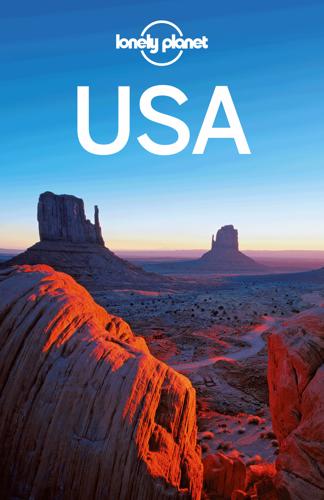
USA Travel Guide
by
Lonely, Planet
OREGON FACTS » Nickname Beaver State » Population 3,831,074 » Area 95,997 sq miles » Capital city Salem (population 154,637) » Other cities Portland (population 583,776), Eugene (population 156,185), Bend (population 76,639) » Sales tax Oregon has no sales tax » Birthplace of former US president Herbert Hoover (1874–1964), writer and Merry Prankster Ken Kesey (1935–2001), actress and dancer Ginger Rogers (1911–95), The Simpsons creator Matt Groening (b 1954), filmmaker Gus Van Sant (b 1952) » Home of Oregon Shakespeare Festival, tree-sitting, Nike, McMenamins » Politics Democratic governor, Democrat majorities in Congress, Democrat in Presidential elections since 1984 » Famous for the Oregon Trail, forests, rain, beer, not being able to pump your own gas » State beverage milk (dairy’s big here) » Driving distances Portland to Eugene 110 miles, Pendleton to Astoria 295 miles Portland If you want to see what the future looks like, come to Portland, Oregon, a city that is 10 years ahead of its time and as definitive of its age as the Rome of Caesar or the Paris of Haussmann.
…
While the downtown’s no oil painting, Eugene wins kudos for its academic institution, the magnificently landscaped University of Oregon, which also doubles up as an arboretum. Elsewhere Eugene is an underneath-the-surface kind of place where some gentle prodding reveals running trails, workers coops and the odd aging Merry Prankster. The Prankster’s original psychedelic bus, Further, remains at the farm of former Eugene resident Ken Kesey in Pleasant Hill, 10 miles away. Sights & Activities As the city that gave the world Nike, Eugene (or ‘Tracktown’ as it likes to call itself) safeguards some of the best running facilities in the nation.
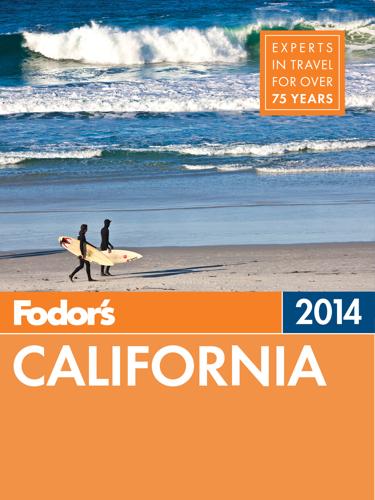
Fodor's California 2014
by
Fodor's
Published 5 Nov 2013
This two-level museum is likely to see an uptick in visitors in response to the 2012 film version of On the Road, whose director donated the 1949 Hudson from the movie. Check out exhibits such as the “Beat pad,” a mock-up of one of the cheap, tiny North Beach apartments the writers and artists populated in the 1950s, complete with bongos and bottle-as-candleholder. Memorabilia include the shirt Neal Cassady wore while driving Ken Kesey’s Merry Prankster bus, “Further.” An early photo of the legendary bus is juxtaposed with a more current picture showing it covered with moss and overgrowth, labeled “Nothing lasts.” Indeed. There are also manuscripts, letters, and early editions by Jack Kerouac, Allen Ginsberg, and Lawrence Ferlinghetti. The gift store has a good selection of Beat philosophy, though it’s nothing you won’t find across the street at City Lights. | 540 Broadway | 94133 | 414/399–9626 | www.thebeatmuseum.org | $8 | Daily 10–7.
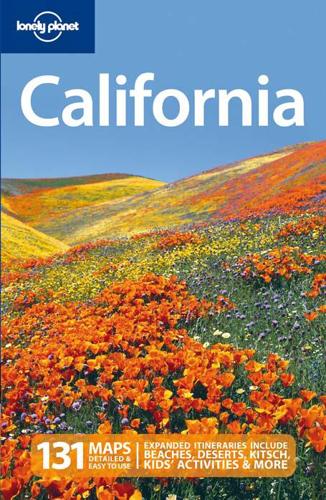
California
by
Sara Benson
Published 15 Oct 2010
Woman Warrior: Memoirs of a Girlhood Among Ghosts (Maxine Hong Kingston) A memoir of growing up Chinese American in Stockton, reflecting the shattered mirror of Californian identity. Slouching Towards Bethlehem (Joan Didion) These 1968 essays burn through the hippie haze to reveal glassy-eyed teenage revolutionaries adrift in the summer of love. The Electric Kool-Aid Acid Test (Tom Wolfe) Follow Ken Kesey, the Merry Pranksters, the Grateful Dead and Hell’s Angels as they tune in, turn on and drop out. The Man in the High Castle (Philip K Dick) The bestselling Berkeley sci-fi writer presents the ultimate what-if scenario: imagine San Francisco circa 1962 if Japan and Nazi Germany had won WWII. Martin Eden (Jack London) Semiautobiographical account of San Francisco’s first literary star, who got by on his wits in the illicit oyster trade.
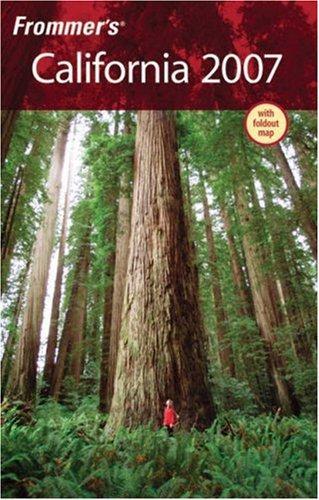
Frommer's California 2007
by
Harry Basch
,
Mark Hiss
,
Erika Lenkert
and
Matthew Richard Poole
Published 6 Dec 2006
Thompson, in his columns for the San Francisco Examiner (brought together in the collection Generation of Swine), both used a “new journalistic” approach in their studies of San Francisco in the 1960s. Tom Wolfe’s early work The Electric Kool-Aid Acid Test follows the Hell’s Angels, the Grateful Dead, and Ken Kesey’s Merry Pranksters as they ride through the hallucinogenic 1960s. Meanwhile, in “Howl” and On the Road, Beat writers Allen Ginsberg and Jack Kerouac, respectively, were penning protests against political conservatism— and promoting their bohemian lifestyle. CONTEMPORARY FICTION If you’re interested in a contemporary look back at four generations in the life of an American family, you can do no better than Wallace Stegner’s Angle of Repose.